



‘THIS SMILING VALE’: KROTONA’S CENTURY
OJAI’S NEW LOVE
OJAI’S BIG BACKYARD
OF












Market,
bustling Midtown Ojai!











‘THIS SMILING VALE’: KROTONA’S CENTURY
OJAI’S NEW LOVE
OJAI’S BIG BACKYARD
OF












Market,
bustling Midtown Ojai!










This Bill Mahan-designed Tuscan style home is a spitting image of his other architectural masterpiece, the neighboring Ojai Valley Inn. This home is an entertainer’s delight with the Ojai Valley Inn almost as your backyard; go to the Spa, play a round of golf, go eat at the best restaurants Ojai has to offer or just walk the beautiful grounds. Surrounded by incredible views with multiple outdoor dining spaces and a beautiful pool and jacuzzi.
The property is completely enclosed for those who seek privacy yet, conveniently close to downtown Ojai, easily accessible by way of the bike path. This private home has 5 Fireplaces, 4 Bedrooms, 3 1/2 Baths, a Media/Family Room, an eat-in Kitchen with Fireplace, a large Pantry, and a Laundry Room. The marvelous, private primary suite includes a wonderful Bathroom with a Fireplace and large amounts of closet space.

SALES, RENTALS AND MANAGEMENT
Ojaipropertygroup@gmail.com








p.32
OUT OF OJAI, IN TO AFRICA
Nomad Foundation Founder Ties Together Art & Artisans
Story by Leslie Clark

p.40
BOOKS OF KROTONA Literature, Laughter & More at Krotona Library’s 100th Story By Kit Stolz
p.21
Editor’s Note
p.22 Contributors
p.23
Ojai Podcasts & 2 Degrees
p.25
Shop Local Gift Guide
p.46
Artist Profile
p.53
Food & Drink Section
p.65
Yesterday & Today Section
p.97
Healers of Ojai
p.101
The Hikes of Ojai
p.109
Calendar of Events


p.56
OJAI’S NEW LOVE
The Masons Re-Open
Iconic Café
Story By Ilona Saari

p.68
COVER STORY
Theosophists’
Story by Kate Fernandez


Style,
p.88

p.102
p.108


Our Ojai hospital is a nonprofit, community-based, acute care facility serving the residents of Ojai Valley. This 25-bed acute-care facility serves residents with a variety of critical services:
• 24/7 emergency care
• Inpatient care
• Imaging (MRI, x-ray, 3-D mammography & more)
• Laboratory services
• Transitional care (nursing & rehabiliation after hospitalization)


As the only skilled nursing and rehabilitation facility in Ventura County located on a hospital campus, our 75-bed Continuing Care Center offers short-term and long-term care.
• Post-surgical care
• Short-term skilled nursing & rehabilitation
• Long-term, custodial care
• Hospice & palliative care
• Physical, occupational & speech therapy
• On-site imaging, phlebotomy & lab services
Community Memorial Hospital – Ojai 1306 Maricopa Hwy. | 805-948-1401 mycmh.org
Phone: 805-948-2000







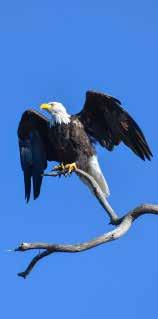
Editor & Publisher
Bret Bradigan
Director of Publications
Bret Bradigan
Creative Director
Uta Ritke
Intern
Kate Fernandez
Ojai Hub Administrator
Julia S. Weissman
Contributing Editors
Mark Lewis
Jerry Camarillo Dunn Jr.
Jesse Phelps
Columnists
Chuck Graham
Ilona Saari
Kit Stolz
Sami Zahringer
Circulation
John Nelson
CONTACT US:
Editorial & Advertising, 805.798.0177 editor@ojaiquarterly.com
The contents of the Ojai Quarterly may not be used, reproduced or transmitted in any form or by any means without the written consent of the publisher.
SUBSCRIPTIONS:
To subscribe to the OQ, visit ojaiquarterly.com or write to 1129 Maricopa Highway, B186 Ojai, CA 93023.
Subscriptions are $24.95 per year.
You can also e-mail us at editor@ojaiquarterly.com. Please recycle this magazine when you are finished. © 2024 Bradigan Group LLC.





“History doesn’t repeat itself. Historians repeat each other.”
— Oscar Wilde
Back in olden times before social media algorithms spoon-fed us outrage and bitterness to roil up engagement, poking around in our collective id so that they could deliver marketing messages directly into our hindbrains, there was a website called Stumbleupon. Stumbleupon worked on a simple premise: We don’t know what we want until we see it, that serendipitous discoveries give us more pleasure than the carefully titrated confirmation bias of today. I miss it. The early-twenty-tweens seem so far away now. A lot sure can happen in a decade.
One reason Stumbleupon (now Fix) worked so well is that it uses a similar process to our Ojai Quarterly and Ojai Monthly magazines. You start with a field of interest, in our case Ojai, and start expanding outward from there. You never know what you’re going to find. Many people have told me “I learn something new every issue!” So do I. It’s a big reason why I launched this project nearly 15 years ago. Because if I enjoyed learning about Ojai so much, others would too.
In every story this issue I found exciting discoveries and satisfying information. The lead story came about from a podcast episode with Elena Dovalsantos, Maria Parisen and Pablo Sender about the Krotona Center’s 100th anniversary. The Theosophist Society put Ojai on the esoteric map as a birthplace for an evolved incarnation of mankind. They certainly recognized that there was something special about Ojai. Kit Stolz opens the doors to Krotona’s illustrious library, one of the finest collections of its kind anywhere. There’s plenty for Ojai’s Krotona Center to celebrate in their first century.
Mark Lewis does one of his patented deep dives on Catherine Dain, a familiar fixture who has recently retired after decades at the Ojai Art Center. She is well known to Ojai residents, especially those on the theater scene. I learned that she was also an actress, game show contestant, stockbroker, TV news anchor, magazine editor, and college professor. She was also a professional tarot card reader, a parttime journalist and a well-regarded mystery novelist. Dain is one of those hidden gems that the OQ delights in finding. We hope you also enjoy learning about this singular character.
Leslie Clark is a well-known artist and fifth-generation Ojai resident. It is less well known how she acquired her great love of African art and artisans, which led to the founding of the Nomad Foundation, as well as her gallery, and her distinctive, instantly recognizable, portraits of these nomadic people and their colorful, down-to-earth beauty and joy. She tells her own story, in her own voice, giving us a glimpse into her book coming out soon. There’s plenty more, as we learn about Chuck Graham’s deep quests into Ojai’s spectacular backcountry that culminates in Carrizo Plain National Monument and Ilona Saari’s dramatic telling of Love Social Café’s rebirth.
Sami Zahringer gets, as always, the last word in this issue. Her astonishingly vivid and hilarious word play reveals hidden truths about Ojai, or at least ones we’d prefer not to lead with. Sami is our mirror, a freaky, funhouse mirror, but a reflection of who we are nonetheless.

BRANDI CROCKETT
is an Ojai pixie tangerine peelin’ native and an editorial and destination wedding photographer. Check out her work at fancyfreephotography. com


CHUCK GRAHAM’S work has appeared in Outdoor Photographer, Canoe & Kayak, Trail Runner, Men’s Journal, The Surfer’s Journal and Backpacker.

JERRY DUNN
worked with the National Geographic Society for 35 years and has won three Lowell Thomas Awards, the “Oscars” of the field, from the Society of American Travel Writers.

KATE FERNANDEZ is a student journalist at UCSB, who is majoring in English and minoring in Professional Writing.
MARK LEWIS
is a writer and editor based in Ojai. He can be contacted at mark lewis1898@gmail.com.


ILONA SAARI
is a writer who’s worked in TV/film, rock’n’roll and political press, and as an op-ed columnist, mystery novelist and consultant for HGTV. She blogs for food: mydinnerswithrichard. blogspot.com.
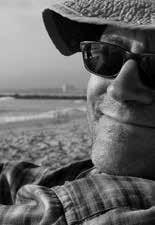
KIT STOLZ
is an award-winning journalist who has written for newspapers, magazines, literary journals, and online sites. He lives in Upper Ojai and blogs at achangeinthewind.com

UTA CULEMANNRITKE
is an independent artist, designer and curator. She is a member of Ojai Studio Artists and runs utaculemann.design.
SAMI ZAHRINGER
is an Ojai writer and award-winning breeder of domestic American long-haired children. She has more forcedmeat recipes than you.
Thornton Wilder, author of “Our Town,” was a student at The Thacher School, his first experience with small-town life. Though set in Grover’s Corner, New Hampshire, the time frame, specific details, and even the people in “Our Town” were reminiscent of Wilder’s experience in Ojai. His first play, “The Russian Princess” was performed at The Thacher School in 1912.


Fiona Ma, California’s Treasurer, stopped by to talk about the state’s $38 billion budget deficit and plans to close the gap. Her husband, Jason Hodge, is a Ventura County Firefighter, formerly stationed in Ojai, so she feels part of the area, as she steers the world’s 5th largest economy, with a gross domestic product of $3.8 trillion per year. She’s running for Lieutenant Governor after serving as treasurer, state senate and assembly, among other elected roles. (Ep. 175)
Chef Robin Goldstein, caterer and author, brought her world travels and childhood in the restaurant business to Ojai when she moved here nearly two decades ago. Known for her fusion of California cuisine and Mediterranean freshness, she has written “A Taste of Ojai,” “A Taste of Santa Barbara” and “Wine Country.” Goldstein also describes her education at the CIA, the Culinary Institute of America, frequent travels to Europe for inspiration and working with star chefs in Los Angeles. (Ep. 172)


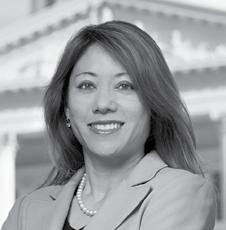
Matt Henriksen is the manager of Bart’s Books in Ojai, the worldfamed outdoor bookstore. He took the job nearly 11 years ago after having served as the store’s jack of all trades. He talks about Bart’s importance to Ojai’s identity, the changes in the bookstore, and how Ojai has changed since his youth. His extensive knowledge of books and literary tastes have made him an indispensable resource for readers everywhere. (Ep. 174)
Chris Miller found his community at the legendary Pipeline Skate Park in Upland, and turned professional while still in high school. While skating around the world and winning many championships with his graceful, smooth style, he also
ONE: The Great Bambino, the Sultan of Swat, George Herman “Babe” Ruth is known for his home run records and World Series Championships with the New York Yankees, and considered one of the greatest American athletes. He is lesser known for causing the last out in the 1926 World Series in game 7 when he was caught stealing second base, giving the series win to the Saint Louis Cardinals.
TWO: Ruth shares that dubious distinction with Fred
kept at his artwork, designing his own skateboard decks, and for his friends. That led to him founding Planet Earth, an early skating apparel brand.
Then in 2014 he teamed up Joe Kudlo to form Vuori, an “athleisure wear” brand for men,
which exploded in popularity during the pandemic with homebound workers to reach a value of $4 billion.
Meanwhile, he has continued to skate, and continues to dominate competitions well into his 50s.(Ep. 173)
TWO DEGREES BETWEEN
2 of OJAI SEPARATION
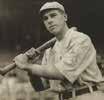



Snodgrass, a long-time Ventura County resident, former Oxnard Mayor, who also lived for a time in Ojai.
In the 10th inning of the 1912 World Series, playing for the New York Giants against the Boston Red Sox, Snodgrass missed an easy fly ball in Game 7, which handed the Red Sox the win.
After a long and distinguished career in Ojai and Ventura County as a banker, rancher and community leader, Snodgrass’ obituary in the New York Times was titled “Snodgrass, 86, Muffed 1912 Fly Ball.”

2024 SENIOR INDIA TRIP
RISHI VALLEY RURAL EDUCATION CENTER

CLASS OF 2023
2024-2025
OAKGROVESCHOOL.ORG

At Oak Grove we approach teaching, learning, and living as an art form – The Art of Living and Learning. Our students are given tools to build life-long practices of intellectual discipline, strong communication skills, self-reflection, empathy, and clear thinking. Our high school’s challenging college-preparatory curriculum is designed to exceed admissions requirements for the most selective universities across the country. The Outdoor Education and Travel Program is an essential component of Oak Grove’s approach to education. Whether walking through our 150-acre oak-studded campus in Ojai or traveling to India as a senior, students are provided with many opportunities to learn from nature, build lasting friendships, develop cross-cultural understanding, and become active stewards of the environment.

BLANCHE SILVIA
212-A E. OJAI AVE • 805-798-0177
Hand-Made fragrance oils, $48 each @blanchesilviaojai @wrenceramics

FRIENDS RANCH
15150 MARICOPA HWY • 805-646-2871
Mail order is available online; fruit ships in the New Year. FriendsRanches.com.
Local citrus sells at $5+ per 2 pound bag

OSO VINTAGE & MODERN
212-B E. OJAI AVE • 805-798-4769
BLUNDSTONE Boots. Built with the distinctive look & feel since 1870. Mention this ad for 15 percent off!

BLANCHE SILVIA
212-A E. OJAI AVE • 805-798-0177
Tata Cups Available. $48 each. Designed and Hand-Made by Wren Ceramics @blanchesilviakitchen @wrenceramics

MINGLE’S COCONUTS
625 N. VENTURA AVE • 805-393-4282
Mingle’s love for coconuts comes out in every product we create. “It is alive for you to thrive!” instagram @minglelicious

SUNDAY’S
307 E. OJAI AVE • 805-766-1366
Sustainable Gift Boxes. Our approach is to create high-quality, unique gifts that support the community. Thoughtfully curated & free local delivery
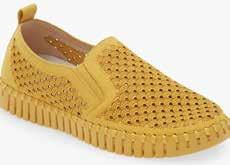
DANSKI
321 E. OJAI AVE • 805-646-1927
Ilse Jacobsen Tulip Shoes. Comfort and style, with a wide variety of sizes and colors. “Like walking on clouds.”

MINGLE’S COCONUTS
625 N. VENTURA AVE • 805-393-4282
Purveyor of fresh Thai coconuts in Ventura and Los Angeles counties. Follow our instagram @minglelicious

SUNDAY’S
307 E. OJAI AVE • 805-766-1366
Sustainable Gift Boxes. Our approach is to create high-quality, unique gifts that support the community. Thoughtfully curated & free local delivery




“Beautiful, newly remodeled house — rustic chic, just like the pics. Had everything we needed, and beds were super comfy. Probably even better in warm weather when you could enjoy the lovely side yards and outside dining, but very cozy in the winter, too. Well-located about halfway between Ojai and Santa Paula with easy access to both. We had a great stay and recommended!”






32

32 out of ojai, into africa
Artist Brings Treasures From her Travels Back to Ojai
42-52
Boutiques & lodging
Where to Stay, Where to Shop
40 library of Ojai
Krotona Library One of World’s Largest Esoteric Collections
49 artists & galleries
The People, Places That Make Ojai an Arts Destination



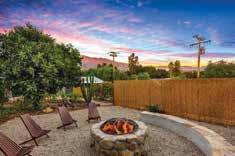









 SHERIFF ROBERT CLARK
SHERIFF ROBERT CLARK
my great-grandfather got to Ojai in 1868, it wasn’t yet called Ojai. My grandfather was a forest ranger and a cattle-herder. He was also a stagecoach driver and a gun-toting sheriff of Ventura County. He taught me to love adventure and wild country. My other grandfather built his own house in his orchard on what is now Cruzero Street. He taught me to draw. The things my grandfathers taught me would become the passions of my life.

My life as an artist was based on travel — each year it got more exotic. I started exploring the Mediterranean and ended up in the Sahara Desert. I was always a solitary traveler since it was almost impossible to find anyone willing to travel with me to the destinations I chose. Then I met Charlene Pidgeon.
She was an adventurous world traveler and loved Africa. In the ‘70s, she had made her way from Greece to India crossing Turkey, Iran, Afghanistan, Pakistan into India. She hitchhiked, travelling by truck, donkey cart and train at the age of 22. We recognized each other as kindred spirits. We both had a pas-
sion for Africa and both had reasons to shop. I had Nomad Art Gallery and she an interior design business and was known as a specialist in African textiles. We started planning trips.
Africa captured my mind, heart and soul, an my paintings were no longer suited for other galleries. I was painting African people and they needed to be surrounded by their own arts. I wanted to support them, so I opened Nomad Gallery next door to Libbey Park and ran it for 23 years. I should say it ran me. Had I known how complicated shopping and shipping from Africa was, I would never have started.
We arrived in Cotonou, the capital of Benin, to a noxious bottleneck of noisy traffic. This was an unpleasant surprise since other countries we had frequented in West Africa had few paved roads and did not have enough cars to have traffic.
Le Centre pour le Promotion des Arts was a huge marketplace where artifacts from all over West Africa were assembled. Shopping in West Africa was not like going to a store in the U.S. Treasures could be found in the most unexpected places, but marketplaces like the one we approached would be the best way of finding a large selection in one spot. Usually, they were an array of cobbled-together open-air stalls with carvings scattered in the dirt. The prices were never marked, negotiating obligatory.
Negotiation was an art worth developing to make any purchase in Africa. Owners of shops or stalls in buildings had a greater selection, but the real bargains came from the many street hawkers scattered around the markets.
These roaming vendors did not have to pay stall rentals. They were likely trying to sell some family possession because they needed money. Sometimes they were desperate and followed you with the item that you casually glanced at for hours. Often, I bought something I seriously did not want, but weakened because I could see how important the sale was to the vendor or I just wanted to be rid of him.
the search for a reliable shipper began.
There were pitfalls at every step. Once a “friend” offered to help. We agreed on a price for his services and the shipping cost, but once I was home, he decided it was not enough. He held our packages hostage until with no other choice, I capitulated and paid double. Once a shipment of textiles arrived in the U.S .only to be sent back to Africa because the crates they were in had no record of being fumigated. The shipping angst was never over until the goods were in our hands in California.
My travels with Charlene were wide-ranging, and shopping was always an important component. We traveled to India, Bali, Kashmir, Mongolia, Papua New Guinea, but we always kept coming back to West Africa. We shopped in Togo, Ghana, Benin, Ivory Coast, Burkina Faso, Niger, Guinea Bissau, Mauritania and Senegal, but our favorite was Mali. It was the home of some of the most talented artisans in Africa.
Charlene had been married to Abdoulaye, a delightful Malian man and they remained friends. Abdoulaye became our mentor in the realm of African antiquities. He had a special gift for recognizing the best carvings and had been a consultant and buyer for European museums. There was no one better to get us to the good stuff.
The Bandiagara escarpment in central Mali was Dogon country. When Moslems invaded in the 7th century the Dogon retreated to homes built in the cliffs, accessible only by ropes and ladders. These offered protection and the Dogon managed to avoid conversion and retain their animist beliefs, still strong today.
Dogon country was rich in artifacts, but was mostly inaccessible by car. Only a very good 4-wheel drive Toyota Land Cruiser and
Shopping was a pleasure and an adventure. We developed excellent, radar—able to dig through piles of apparent junk to find a treasure.
Packing up and shipping was a nightmare. In the searing African heat, we were always dripping with sweat as we wrapped our treasures for transport by air freight back to Los Angeles. Then

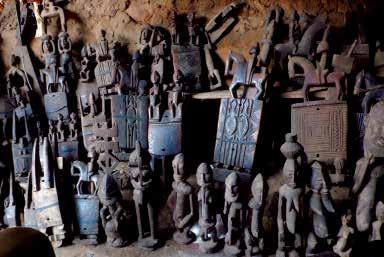
an experienced driver could get us there. It was expensive to have a car and driver sitting around all day while we were shopping and we did not want to rush. The villages were not far apart, so we decided to have the car drive us in and drop us off. We would hire an oxcart to go the few kilometers between villages.
We met our driver, ox and cart in Kanikombole and said goodbye to our fancy car. After a couple of bumpy hours, we named our ox Boom-Boom. He would be our transportation for a week.
There were no shops, but Abdoulaye knew the system. Artisans abound in Dogon country and every family had some of their products. The Dogon were well known for their masked dances and all the dancers required a mask that represented their stage in life. If they felt their mask no longer embodied them or it had lost its power, they commissioned a new one. The old one was then free to be sold to outsiders.
The owner took it to the mayor of the village, who warehoused the treasures in his dirt-floored adobe hut. It was he who negotiated the price with potential customers.
Anyone in need of cash took their family valuables to be sold by the mayor. Only those customers who knew this system would show up. Some major works of art passed through each mayor’s dusty storage hut, sometimes on their way to a major museum. The Dogon, excellent carvers, weavers and farmers, were also eager consumers of palm wine. But alcohol did not diminish their productivity. All weekly open-air markets had stalls that acted as bars and sold the homemade brew. They were frequented by people who had just made a sale in the market and were in a hurry to drink their profits.
The Dogon still lived in villages high above the valley, but they farmed and held their markets on the flat valley floor.
Although the cliff dwellings were largely abandoned, most villages were not accessible by road. They were reached by steep trails over and around massive boulders. Each village was an informal market. Every intricately carved front door was for sale. Every sculpted mortar with its pestle worn smooth from use was for sale. Just ask and make an offer.
Some villages specialized in mud-cloth. This handwoven cotton fabric was invented by the Bambara, who gave it the name bogo

lan, but was adopted by the Dogon who became known for it.
It has become prized and copied around the world and is now a symbol of Malian cultural identity.
As we wove our way through narrow streets, tapestries were displayed on the exterior mud walls of the courtyards. We would come upon a woman sitting in an alcove spinning cotton into thread. In the next courtyard men with back looms wove the cotton into 4” wide strips. These were sewn together to make large blankets or clothing. Around the next corner, dyed fabric would be on the ground waiting for the design to be painted on in mud. After the sun did its magic and reacted with the iron in the mud, it was washed off to reveal a rich brown-black design.
As we moved along the valley floor in the cart, our pile of purchases grew. The village of Yendou specialized in carving doors. We arrived after a treacherously steep climb through huge boulders. The houses were built on the hillside, but at least we could reach them by paths and steps, not ropes and ladders. Most houses had beautifully carved doors and smaller granary doors.
There was no evidence they were for sale, but Abdoulaye explained that all the doors in this village were for sale—just knock and ask. My concern was—how do we get them down the hill to the cart? “Pas de probleme,” he replied, just ask the seller to provide transport. When I realized this would be a young boy carrying the massive door on his head, I hesitated. But then the kid took off down the hill, door on head. By the time we had made our careful
way down to the car, he had been waiting 15 minutes.
I did not know it then, but this would be our last trip to Mali. West Africa would change radically with the gradual inroads of terrorism, the fall of Gaddafi and the arms that flooded out of Libya as a result. Mali, our treasured safe place in West Africa, would fall to jihadists and become a deadly place not only for tourists, but for its own people. As much as I long to, I doubt I will ever be able to go back.


Abdoulaye often fears for his life or that of his family. Charlene and I do what we can through my non-profit Nomad Foundation, to help the refugees displaced by this violence survive. Abdoulaye credits that help with saving his life. He was on a bus that was stopped by gun-wielding jihadists. They were crazed and agitated, menacing all the passengers. His family was panicked. Then one of the terrorists recognized him because he was known for delivering bags of grain to help feed refugees. They let him go.
At home in Ojai, I am surrounded by the purchases I could not bring myself to sell. Some may be of museum quality, but their real value is not monetary, it is in the memories they hold.










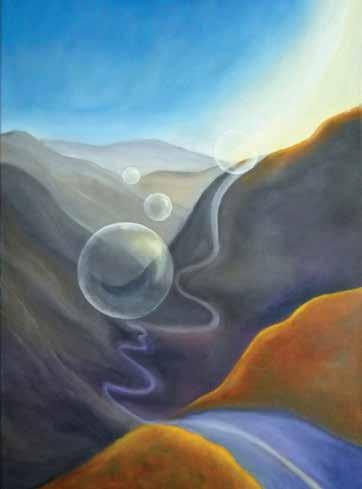























visit the Krotona Library, take a right off Hwy 33 heading towards Ventura, about a half-mile south of “the Y” on Hermosa Road. Drive straight ahead and you will find yourself on the gentle slope of Krotona Road leading up to the library on the hilltop, which stands amidst a grove of stately trees.


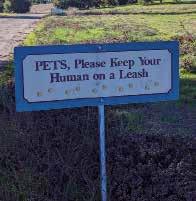
As you motor slowly towards the library you will pass a series of mildly humorous signs, such as: “PETS: Please Keep Your Humans on a Leash.”
Another reads: “DRIVE SLOWLY: Spare our Seniors and Other Wildlife.”
These gently humorous admonitions come as a bit of a surprise, given that this year dignifies the 100th year of the Krotona Institute


and its library of thousands of spiritual works, many of them tomes of great seriousness. The Krotona Institute and Library were founded by world-renowned figures from Theosophy, an international spiritual movement known for its profound pursuit of an underlying harmony among the many faiths around the world.
So although the signs may not be uproariously funny, they serve to welcome visitors, rather than chastise them with rules. Not what one might expect from a religious institution.
“They’re a happy bunch up there,” said Jim Burklo, who for fourteen years — before his recent retirement — served as the senior associate dean of religious and spiritual life at the University of Southern California. Burklo has for years brought large groups of students to Krotona as part of a “souljourn” around Southern California. He reports that the students loved it.
“We would take students from our Interfaith Council at USC on expeditions to explore the very rich religious and spiritual diversity of California,” he said. “Starting in 2008, I started taking students to Krotona. And every time they came they would be just enchanted, particularly with the library. I would take them there and they would just go nuts. It’s a terrific library. Just about all the world’s religions are represented there. The library specializes in the esoteric traditions of the world’s religions, but in fact it represents religions beyond the esoteric tradition. And of course, the view from up there is just to die for. The students’ mouths would be hanging open as they walked around the grounds.”
Susan Johnson, the Director of the Krotona Library, recalled
Burklo and his student groups fondly.
“He brought a whole class of 30 kids and they would sit and have very interesting conversations about things that they probably would never talk about much at home, about concepts such as karma or reincarnation,” she said.
Burklo is just one of several teachers, past and present, bringing students to Krotona and its library, including Christopher Chapple of Loyola Marymount University and Betsy Stix of the Besant Hill School in Upper Ojai.
“Teachers know that coming here will give students a taste of something that is religious and yet is beyond religion,” Johnson said.
If you walk around the library, the long and elegant fountain garden behind, the lush grounds, the welcoming bookstore, and the hilltop school, complete with a labyrinth, one cannot miss the stillness — the serenity — in which the landscape seems steeped.
“Oh, it’s so peaceful here,” day visitors tell Johnson and her staff at the library. “It’s so beautiful. My mother would love it here. We’re coming back for sure.”
Johnson said that it’s not unusual for visitors from out of town to drive up to the Library on a moment’s whim, not even knowing about its spiritual focus or its long history.
“A lot of people come from the Los Angeles area, kind of escaping the craziness down there to come up and find some peace and tranquility,” she said. “Sometimes they don’t even know why they drove

up. There’s been a huge influx of visitors lately on the weekends.”
Johnson and her staff are usually the first people visitors to Krotona encounter.
“We’re not only the Krotona Library, we’re also the information center, and because we’re the first building that people see we’re also the first building that people come to,” she said. “So we hear a lot of “Where are we?” and “What’s going on here” type questions? So I very happily give them an idea of places to go visit on the property and things to do here, and a brief history of Krotona, which was founded in Hollywood in 1912 and moved here in 1924.”

The peacefulness of the setting cloaks a great deal of work behind the scenes, among visiting scholars, and at the Krotona School of Philosophy.
Maria Parisen, the Director of the Institute and the School of Krotona, said that presently the school houses 32 students from around the world. Parisen, who -- partnered with her late husband in administrative work for the Theosophical Society for many years -- expressed pride in both the diversity of the residents and the sincerity of their spiritual inquiry.
“Of the thirty-two students at the School now, we have thirteen for whom English is a second language,” she said. “We see a wide variety of backgrounds and cultures and belief systems. We have Hindus and Buddhists and Christians and Taoists — it’s a very beautiful mix. And they’re all looking for the common denominator, the way to find peace and truth and wisdom with each other.”
Pablo Sender, an Argentinian who has taught and written on theosophy at theosophical centers in India, Illinois, and now Ojai, said that he teaches at Krotona two or three times a year, as well as online, with class presentations that are later posted on YouTube. He has lived with his wife at Krotona for the past seven years and says that they love it.
He added that they felt the spirituality of Ojai from the very first.
“Krotona and the work of Krishnamurti, I think helped shape the valley,” he said. “Ojai is a very spiritual place. I remember when we first came in from Wheaton, Illinois, my wife had some trouble with her car and she went to a mechanic, and the mechanic looked at it and said, ‘Well, listen to the car. Listen to its
troubles,’ he said. So to me it seems that even the mechanic took a spiritual approach.”
Sender believes that a central figure in the theosophical movement and in Ojai’s past, Annie Besant, brought about an enormous change by seeing the potential for evolution in spiritual thought, and using her wealth to establish centers for study of universal spiritual principles.
“Annie Besant was the president of the Theosophical Society when Krotona was established,” he said. “And she recognized that this is a very spiritual place, where a new kind of people will be raised, spiritually speaking.”
Sender added that Besant — famous for announcing spiritual leader Krishnamurti from India as a “World Teacher” in his youth — saw Ojai as the right place for this new form of spirituality. With the backing of the Theosophical Society she brought Krishnamurti to Ojai in the 1920s and never regretted that decision, even though Krishnamurti later went on to famously reject his status as a “World Teacher,” or guru.
“Besant said that more people will be interested in cooperation and brotherhood and in working in a more holistic way here than what we normally see in the world,” he said. “That’s why she thought that Ojai was a good place for Krotona.”
At the same time, Sender added that theosophy sees long “cosmic cycles” of evolution, taking place over hundreds or thousands of years, but along these evolutionary lines he points out that “despite the unrest we see in the world today, in terms of health, or equality, or education, the world overall is in a far better position than it was 400 or 500 years ago.”
Maria Parisen stresses that although Krotona was founded as an “intentional community” with a long-standing interest in esoteric spirituality, “we will never be a spectacle. We are not an organization that needs to bring attention to itself.”
During the pandemic, Krotona worked to reorient away from in-person classes and talks and towards a greater role of online education. Sender, who in Argentina trained to become a scientist — a microbiologist — has taken a leading role in organizing the online offerings, as well as writing articles and books on theosophical thought.
Although the non-profit Theosophical Society benefits from long-standing major grants from the Kern Foundation in the Midwest, Parisen said that Krotona still reaches out to the community, both for support for its library (which offers library cards to residents in Ventura or Santa Barbara for a modest annual fee) and for community programs, including yoga classes and talks in the large and impressive Great Hall. She adds that Krotona won a small grant from the U.S. Fish and Wildlife Service for a native plants garden to encourage the abundance of pollinators.
And she stresses that as Krotona is part of Ojai, Ojai, too, is a big part of Krotona. Parisen herself has many friends and supporters in the community, from the dog walkers in the mornings, to in particular the founders of the Farmer & the Cook, whom she says took especially good care of her during her late husband’s time of need.
“We’re not looking for just anybody to come here,” she said. “The ones that wander up here come because they need what we have to offer. Krotona is a very special place, and I would say that it harbors a divine grace. People are drawn here because they resonate with what we have to offer.”
Parisen speaks quietly but firmly, with the confidence that comes with working for decades for the Theosophical Society and Krotona.
“We’ve been here for a hundred years,” she said. “And now we’re looking at the next 100 years.”





“I graduated from Nordhoff in 1974, UC Irvine in 1979 and Northwestern Dental School in 1983. I practiced dentistry in Ojai from 1983 through 1989. From late ’89 to 2001 I taught at UOP Dental School in San Francisco. I returned to Ojai in 2001 and decided to pursue my dream of carving in marble. I spent five years at Art City in Ventura gleaning technique from several experienced stone sculptors before moving to Upper Ojai where I refined my craft for the next seven years. In 2018 the Thomas Fire destroyed my studio and it took a few years to rebuild and retool. I’m finally working again at my home studio at 1006 Ayers Ave in Ojai, where I’m a member of the Ojai Studio Artists.”
: After struggling for a year carving a figure into a piece of Italian Marble, it was suggested that I carve in a softer stone to get my experience level up. “Try one of these Kansas Fenceposts, the limestone acts a lot like Italian Marble, but softer.” I carved nine pieces the next year, and 15 the next. I carve with Italian hand tools, not power tools. Something is inside each stone and it’s my job to carefully reveal that figure, The soul of the stone, if you will.
My father was a DIY kind of guy. I was the kid who wanted to help. Fixing things is at my core. I was five when I decided I wanted to be a doctor so I could fix people. Over the years, knowing that I wanted to work with my hands, I narrowed it down to being a surgeon. I was pre-med in college when my family dentist showed me what he did to make gold crowns from start to finish. I applied to 29 medical schools and 7 dental schools and got into one: Northwestern University Dental School in Chicago. The decision was made for me.
As a freshman dental student I learned that I was really good at carving teeth in wax from a line drawing in a book. Around the same time I saw a marble sculpture of a human figure at the Chicago Institute of Art, where my mother, Nancy Whitman, had studied. I said to myself, “If I’m good at the teeth, why not the eyes, nose and ears?” I knew then that I’d carve figures in marble someday.
Mother Nature is my muse. The miracles of life inspire me with their beauty. From the human face to a simple flower or rabbit, they are all forms that make up the world we live in. Throughout my mom’s career, she simply wanted to spread joy and happiness with her paintings. I must have inherited that quality from her.
I used to work 60 to 70 hours each week, and loved every minute. An auto accident in 2022 has restricted my abilities, so now it’s 2-3 hours here, and 3-4 hours there. Happily those numbers are growing as I get stronger again. My garage is my studio and gallery. I have a few marble pieces that are in the detail phase, which is the most exciting, and slow going. I work mainly with Italian hand tools, not power tools, so I don’t have to wear a mask or ear muffs. It’s just me, my rock, and my music. Visitors are welcome to drop by.
ADA and Medicare Card Holders and Seniors 65 and up are half price. Seniors 75 and over, Children under 45” tall and all Students are FREE. (Proper identification required for adults to receive discounts.)


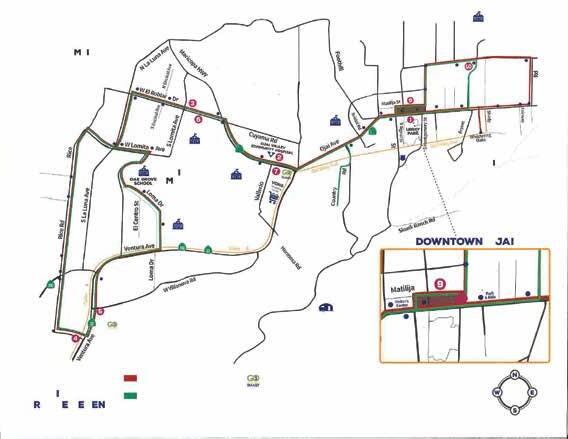
The Ojai Trolley Service, established in 1989, is owned and operated by the City of Ojai. The Trolley provides daily fixed-route transportation to approximately 9,000 riders per month throughout Ojai, Meiners Oaks, and Mira Monte. The Trolley is a wellknown feature in the Ojai Valley, and in addition to the daily fixed-route services, participates in many local community events, fund-raising activities, community service, and educational functions.
Check out the smartphone app GoVCBus for stop-time arrival predictions.

@blanchesylviakitchen



Perhaps it was potter and “the Mama of Dada” Beatrice Wood’s influence, going back nearly 90 years. Maybe it even goes back further, to the Chumash people’s ingenious and astounding artistry with basketry. It’s clear that Ojai has long been a haven for artists. The natural beauty

Firestick Pottery provides classes, studio/kiln space and a gallery abundant with fine ceramics.
1804 East Ojai Avenue. Open from 10 am to 6 pm every day. Gallery
Open to the Public. FirestickPottery.com 805-272-8760

Featuring local artists, including William Prosser and Ted Campos. American-made gifts and cards, crystals, and metaphysical goods.
304 North Montgomery nutmegsojaihouse.com 805-640-1656


OVA ARTS
40+ LOCAL artists with a unique selection of contemporary fine arts, jewelry and crafts.
238 East Ojai Ave 805-646-5682
Daily 10 am – 6 pm
OjaiValleyArtists.com


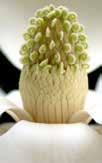
JOYCE HUNTINGTON
Intuitive, visionary artist, inspired by her dreams and meditations. It is “all about the Light.” Her work may be seen at Frameworks of Ojai, 236 West Ojai Ave, where she has her studio. 805-6403601
JoyceHuntingtonArt.com
framed so well by the long arc and lush light of an east-west valley lends itself to artistic pursuits, as does the leisurely pace of life, the sturdy social fabric of a vibrant community and the abundant affection and respect for artists and their acts of creation. Come check it out for yourselves.
paintings & drawings 20th century & earlier Thursday – Sunday noon – 5 p.m.
311 North Montgomery Street canvasandpaper.org

You haven’t seen Ojai until you visit us!
Local art of all types, unusual gifts, Ojai goods! Open daily 11 a.m. to 5 p.m.
323 Matilija Street
KAREN
On a road trip to our new home in 1964, my children kept asking, “Are we there yet?” Our new town was integrating its schools. Reviewing these diverse faces in 2021, I ask myself, “Are we there yet?” KarenKLewis.com
CINDY PITOU
BURTON
Photojournalist and editorial photographer, specializing in portraits, western landscapes and travel. 805-646-6263 798-1026 cell OjaiStudioArtists.org

Plein air landscapes, figures and portraits in oil by nationally-acclaimed artist Dan Schultz.
106 North Signal Street | 805-317-9634
DanSchultzFineArt.com

MARC WHITMAN
Original Landscape, Figure & Portrait Paintings in Oil. Ojai Design Center Gallery.
111 W Topa Topa Street. marc@whitman-architect. com. Open weekdays 8 a.m. to 5 p.m.

LISA SKYHEART MARSHALL
Colorful watercolor+ink botanical paintings with birds, insects and joy. Open studio October 7,8,9.
Info: SkyheartArt.com or OjaiStudioArtists.org

TOM HARDCASTLE
Rich oils and lush pastel paintings from Nationally awarded local artist.
805-895-9642












Explore Ojai Valley’s History, Art and Culture
Thursday–Sunday 10am–4pm 130 W. Ojai Ave. 805 640-1390 OjaiValleyMuseum.org

Library and Research Center:
2 Krotona St, Ojai CA 93023
Quest Bookshop: 47 Krotona St , Ojai CA 93023
School of Theosophy: 46 Krotona St , Ojai CA 93023
 By Scott Daigre
By Scott Daigre


Restaurant - Sushi Bar
Fresh Fish Market
Heated Patios & Full Bar


 STORY BY ILONA SAARI
STORY BY ILONA SAARI
Masons’ coffee house/café, Lo>e Social, in its Signal Street incarnation, had a brilliant first act — it was a gathering place for many who loved not only its good coffee, tea and food, but also the message of love, of community, of a gathering place to be social and to share in the love.
And, when they announced last year that it was closing, “oh, no’s” reverberated in the Valley, echoing off the Topas, if not literally, figuratively. Followers were saddened and disappointed. But as it turned out, the Masons were simply entering an intermission.

And, as we know in theater, unless it’s a one act play, a second act follows an intermission. When I recently interviewed Sean and Felicia, Lo>e Social’s first act had just ended, but the Masons took advantage of the café’s act break to renovate, design and write Lo>e Social’s second act.
A tot during the “Peace & Love” era, Sean lived at the foot of majestic Mount Kilimanjaro. As in “The Lion King,” I can only imagine Sean’s schoolteacher father (pre-Peace Corps) lifting his young son up to the gods, allowing the mountain’s spiritual aura to enter Sean’s soul. Back in the States and before becoming a lawyer, Sean studied theater and did a bit of acting as an un-



der-grad (as well as on Ojai stages years later) and dreamed one day of having a place (a theater or coffee house) where people could come together and create.
Felicia is a child of the Ojai vortex.
Her mom, Ojai’s legendary café owner, Jenny Newell, is the proprietor of popular Bonnie Lu’s Country Café, where Jenny’s welcoming smile and inclusion to all who enter became a beacon of love and kindness for her daughter.
Felicia’s openly friendly, warm and approachable personality draws folks to her as her aura surrounds them like a big hug ... so, it wasn’t a surprise when Sean and Felicia met and formed a loving and spiritual partnership.


It was a marriage made in the heavens and gave birth to the NoSo Vita (“something from nothing, creates life”) café/coffee house — a place of community where people gathered together to create, muse, mingle or just hang.
Offering good coffee and delicious fare, the Masons’ message of love and community blossomed and NoSo Vita was rebirthed and renamed … Lo>e Social. The coffee and tea flowed as their “greater than” message radiated throughout the café. Patrons multiplied as their breakfast and lunch selections continued to fill their stomachs (I was particularly partial to their tuna with capers sandwich) and their message filled their souls … but the clock was ticking and their lease expired. The decision to close their doors and furl their outdoor umbrellas was difficult but necessary. They alerted their employees weeks before the closing, allowing them to leave and seek other employment, but all stayed. The Masons made a video for social media to let all who loved Lo>e Social know what was happening. When they
announced a farewell gathering at the café, dozens of customers came to wish them well, but there was also a “say it ain’t so” crowd, and a seed was planted.
With new partners, Mark Sims and Pixie Saavedra, that seed sprouted and Lo>e Social was rebuilt on a new stage. The site, a more spacious space last occupied by Sage Restaurant, has a truly lovely back patio terrace overlooking the grassy courtyard behind

the Arcade. Two indoor dining spaces dominate the interior.
One is a breakfast/lunch room in the “front of the house” with a stunning wall mural painted by husband-and-wife artists, Olivia and David Flores — appropriately titled, “Planting the Seed.”
The other is an inviting dining room with a full bar that the Masons like to see as a “Speak Freely” space in lieu of “Speakeasy,” where locals and tourists can meet, mingle, talk and listen to each other freely with love and kindness. They’ve named the Speak Freely “PS – I Love You” which is written above the bar (evening hours to be determined).
As a community ‘hub,’ Love Social will be a space that folks can rent for personal and community events and where a visiting chef will be able to come and host a pop-up dinner. Food choices will include a few favorites from the “First Act Love Social” on Signal, such as the café’s mouthwatering breakfast burrito, but it will also offer a variety of new selections on an ever-changing
menu. Live music, play readings, book signings and other community events can find a home at Lo>e Social. Also in the works is the possibility of hosting community dinner socials … a grilled cheese night, or a chili night, perhaps ... whatever feels good!
Gather together for coffee and a bite to eat, or come for a cocktail, a glass of wine or a nightcap. The café’s new spaces have been created to embrace you with a virtual hug and allow your spirit to thrive. What’s not to love?!


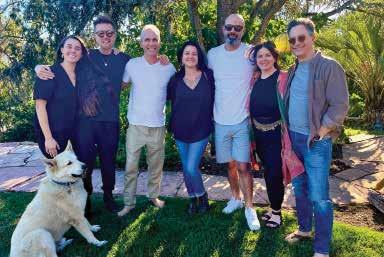






“...The feel is fun, energetic & evokes the perfect Ojai picnic...”

88

68
100 years of Krotona
Theosophists Identify Ojai as Birthplace of Evolved Mankind
By Kate Fernandez88
Palm Springs, So Hot it’s cool
The Desert Oasis Where Style, Stars Combine
By Jerry Dunn80
Many Mysteries of Dain Revealing Catherine Dain’s Incredible Journey to Ojai
By Mark Lewis102
ojai’s big backyard
A Backpacking Ramble Through the Mountains & Valleys Behind Us
By Chuck Graham













This gorgeous 5.25 acre property accessed by gated entry from Foothill Rd has meadows and ancient oaks decorating a unique expanse of usable land. Totally private and inviting, it is bordered by the undeveloped hillsides of Stewart Canyon and has easy access to the Pratt Trail and Shelf Road. Unobstructed views of the Topa Topas and surrounding mountains make this an ideal location for a fabulous home, a horse property, a large retreat compound or anything you can imagine. It is adjacent to two other available lots which could create a fabulous 22 acre lot.
1218FoothillRdOjai.com


Offered at $2,500,000


reportedly negotiated to buy the entire state of Baja, California, and Baja remains an important location for the Theosophical Society. In fact, Besant, a formidable fundraiser, sight unseen, bought 465 acres in upper Ojai and called it “Happy Valley,” along with another 175 acres near Krotona, site of the famous Oak Grove where Krishnamurti spoke to thousands of people each year. It is now the site of Oak Grove School.
Besant finally visited Ojai at age 79 in 1926 as the Krotona Center was taking final form. She was enthusiastic.
“One of the beauty spots of the world is the Ojai Valley in California,” she wrote in The Theosophist, calling it “this smiling vale.
“Mountains ring it round; it has remained secluded till recent times, and is still but sparsely inhabited … Such is the setting for the cradle of the New Civilization in America.”
Besant, besides heading the Theosophical Society, and mentoring Krishnamurti before he parted ways with the Theosophists in 1929,


also mentored a young South African lawyer named Mohandas K. Gandhi. Even after Gandhi was given the honorific “Mahatma” or Great Soul, he credited Besant for her energy and organizing force for India’s decades-long struggle for its independence. She was also instrumental in movements for women’s rights and labor activism.
Pablo Sender, Ph.D, resident and teacher, along with colleagues Elena Dovalsantos, and Maria Parisen, were all recently interviewed on the Ojai Talk of the Town podcast regarding Krotona’s upcoming anniversary celebrations.
As the director of the school, Parisen manages student housing, arranges programs, and seeks out guest speakers, in addition to sitting on the board of directors. Dovalsantos, who is the resident head of Krotona, also sits on this board, in addition to managing infrastructure and overseeing the upkeep of the Institute’s grounds.
Sender said, “When Annie Besant came, she recognized immediately that the value (of Ojai) was special from a spiritual point of view. She foresaw that this was going to be a spiritual place.”

Besant’s influence extended beyond recognition; she actively participated in fundraising for land purchase and construction in Ojai. Her vision shaped the institute, specifying that the land be used exclusively for educational purposes, fostering spiritual development rather than commercial pursuits.


Today, the Krotona Institute stands as a Theosophical school, offering courses, seminars and workshops.
With Besant’s imprint, the institute houses the world’s largest collection of Esoteric literature in its library, serving as a hub for spiritual exploration. The Theosophists were the first organization to bring Eastern philosophies like Buddhism and Hinduism to the West.
Parisen explained that from April 12 to April 26, Krotona will be celebrating the centennial in a variety of ways. “The Krotona President … and her husband are coming in. They’re going to do some teaching for us for one week. And that’s on a Theosophical classic called ‘The Voice of the Silence’.
It’s a mystic text that has to do with meditation and the unfolding of consciousness into something more universal, more compassionate, more wise.”
Following this teaching on “The Voice of Silence,” which will last for about five days, there will be an interlude weekend, which Peter Russell will be attending on Saturday, April 20. Russell is an author and speaker who focuses on spirituality, science and consciousness and perennial philosophy. Parisen noted that he will “bring a very interesting perspective to Earth Day weekend.” ”The Voice of the Silence” is a mystic text focusing on meditation and consciousness unfolding.
The anniversary celebrations aim for introspection, exploring the transformative power within and without. Betsy Stix, Ojai mayor, and Julie Tumamait, Chumash Elder, are expected to contribute to the opening ceremony, emphasizing the theme of change rooted in consciousness.
The Krotona Institute remains distinct in its focus on living the teachings rather than outreach. Krotona aims to deepen connections, harmonize efforts, and extend its influence globally through its online classes, which grew fast during the pandemic.
As Krotona celebrates its 100th anniversary, its members aspire to continue delving into the divine wisdom of Theosophy and the inner illumination derived from its pursuit.
Maria Parisen reflected during the podcast, “Everything comes out of the work we do together, how deeply we can connect with one another, how harmoniously we can get the work done that needs to be done, everyone fulfilling their volunteer responsibilities.”
Parisen said, “And then we have another four days of teaching after that. And the theme for that part is transformation within and without. So, this is the idea that all real change comes from a change in consciousness.
And that’s what we’re looking for here. Something wider, more expansive, more inclusive. More full of life.”
Sender adds, “And now with the possibility of giving online classes, we are expanding our reach. And we are being more involved in providing philosophical education to members of the society internationally.”
While the event is highly anticipated in the Theosophist community, it is hard to gauge how many will be attending. People
will be coming and going from the different activities. In addition to the on-campus housing, Krotona has also made several hosting arrangements with locals.
While other Theosophical centers around the world may focus more on outreach, this has not been the primary goal at Krotona.
“We’re also more like a spiritual center. So, a little bit different from the other centers, because we focus more on living the teachings, rather than just teaching it and trying to spread it,” said Dovalsantos.
In celebrating the center’s anniversary, the members of Krotona hope to continue exploring the wisdom that is Theosophy, as well as the “inner illumination, “or state of clarity that comes from achieving this divine wisdom.
“Everything comes out of the work we do together, how deeply we can connect with one another, how harmoniously we can get the work done that needs to be done, everyone fulfilling their volunteer responsibilities, and then reaching out in more effective ways, with the central principles that we bring, which are universal and critical for Ojai,” said Parisen.
In this way, education remains central to Krotona’s principles, yet the institute looks forward to a future where its influence extends far beyond the picturesque hills of Ojai.


➞ APRIL 20 SATURDAY 2 - 4 P.M.
“Waking Up in Time
An Afternoon with Peter Russell”
➞ APRIL 21 SUNDAY 2 – 4:30 P.M.
Open House Celebration Featuring Chumash Elder Blessing
➞ WELCOME AND PERSPECTIVES
Betsy Stix, Ojai Mayor
Elena Dovalsantos, Krotona V. President & Resident Head (or Linda Oliveira, President KIT )
Douglas Keene, President, The Theosophical Society in America
➞ PRESENTATIONS
Janet Kerschner, TSA Archivist “How Krotona Came to Be”
Video: “An Enduring Vision: Krotona Then, Now and Tomorrow”
Refreshments on the Library Veranda
➞ ACTIVITIES
Krotona Tour 1 p.m.
Refreshments 4:30 a.m. Library Veranda
New and Used Books and Krotona Plant Sale




The Turtle Conservancy, located in Ojai’s East End, is dedicated to protecting threatened turtles and tortoises and their habitats worldwide, and to countering the illegal trade in such animals, which is decimating their numbers. Working with partner organizations, they’ve purchased land and established preserves for endangered turtles in Africa, Asia and Mexico. They’ve established a captive breeding center with the ultimate goal of re-wilding species to their native habitats when it is safe to do so. The Turtle Conservancy depends on donations to fund its programs, and welcomes volunteers to help out with numerous projects at our Ojai facility.
LOCKWOOD ANIMAL RESCUE CENTER
info@lockwoodarc.org
phone: 661-220-5505
The Lockwood Animal Rescue Center (LARC), founded by Dr. Lorin Lindner and Matt Simmons, offered a therapeutic work environment for returning combat veterans and a “forever home” to wolves, wolfdogs, coyotes, horses, parrots and other animals. Located on a 20-acre facility, they offered both the veterans and animals an opportunity to heal and thrive in a back-to-nature setting. “Though not open to the public, we cater to veterans suffering from trauma, and are welcome to participate in our work therapy program. We offer an immersion program for veterans to stay and participate, and to learn basic skills for caring for animals and self healing,” Dr. Lindner said.
OJAI RAPTOR CENTER
ojairaptorcenter@gmail.com
phone: 805-649-6884
ORC was founded and is directed by Kimberly Stroud, who started her training at the Raptor Rehabilitation and Release Program in 1992. In 2000 she went on to found Ojai Raptor Center. First and foremost, Ojai Raptor Center is a fully functional and permitted wildlife rehabilitation center, specializing in birds of prey. Every year they take in 500 to 1,000 sick, injured or orphaned birds (including many non-raptor birds, and a small percentage of mammals) with the hopes of rehabilitating them and releasing them back to the wild. Our four-acre campus is comprised of a medical room and hospital, as well as outdoor flights, aviaries and mews. The center also features the largest flight in California.
HUMANE SOCIETY OF VENTURA COUNTY
animals@hsvc.org
phone: 805-646-6505
or 805-656-5031
Nestled in the rolling hills of the Ojai Valley lies a 4.4-acre hidden haven for wayward animals. Founded in 1932, the Humane Society of Ventura County has been serving not just the animals of the Ojai Valley, but all of the animals in Ventura County. Traditionally, an animal shelter is thought of as solely a place for animals to seek refuge until a permanent home can be found. While here at the Humane Society of Ventura County they provide this safe refuge, they also strive to remedy the greater problem of animal overpopulation, abuse and neglect.
TURTLE CONSERVANCY turtleconservancy.org info@turtleconservancy.org.



One-on-one
""
Public










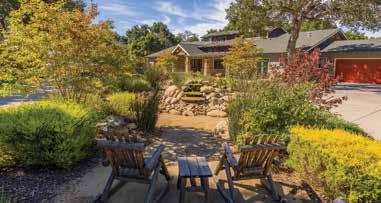












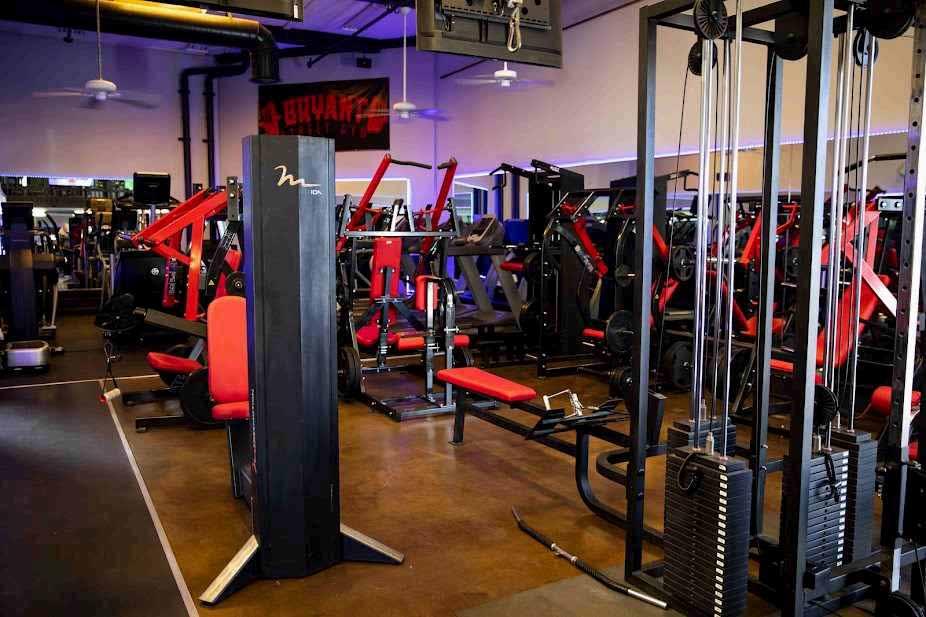







CATHERINE DAIN IN HER L.A. ACTING DAYS
she became a mainstay at the Ojai Art Center Theater, Catherine Dain was a prolific author of mystery novels featuring strong-minded female investigators.
It turns out that her own life story is as compelling a tale as those she crafted for her fictional heroines.

1998 was winding down, Catherine Dain was looking to reboot her career. Again.
The Ventura resident’s resume already included previous stints as an actress, a game show contestant, a stockbroker, a TV news anchor, a magazine editor, and a college professor. Currently she was a professional tarot card reader, a parttime journalist and a well-regarded mystery novelist, author of a series of books featuring the female private eye Freddie O’Neal. The series had reaped Shamus Award nominations from the Private Eye Writers of America and praise from Michael Connelly, author of the bestselling Harry Bosch and Lincoln Lawyer franchises.
“Like Sue Grafton and Sara Paretsky, Catherine Dain has created a private eye with heart and lasting power,” Connelly wrote.
But the Freddie series, while successful, had yet to produce a breakthrough bestseller; and Dain, a latecomer to novel writing, was now pushing 60 and running out of time to reach the pinnacle of her latest profession. Moreover, after writing seven Freddie books in five years, she had become bored with her creation.
So, she had decided to retire Freddie in favor of a new heroine, Mariana Morgan, a psychic investigator living in Los Angeles. The first Mariana book, “Angel in the Dark: A New Age Mys-
tery,” was due to be published on Jan. 1, 1999. If Mariana failed to click with mystery fans, Dain had another new private-eye heroine waiting on deck: Faith Cassidy, a former actress turned freelance sleuth. Dain already had sent her publisher the manuscripts for the second Morgan book and the first two Cassidy books, so there was no pressing need to churn out another one right away. Thus she was in a receptive frame of mind when she came across a newspaper notice that the Ojai Art Center Theater was holding auditions for a play called “Marvin’s Room.”
Acting had been Dain’s first love. She had moved from Nevada to L.A. in the mid 1960s hoping to make it big in Hollywood. That dream eventually died, and she had gone on to other things. By 1998, “I hadn’t been in a theatrical production in 20 years,” she says. But she still loved theater. Maybe “Marvin’s Room” could facilitate her return to acting, not to make a living but just for the fun of it. She decided to try out for the play.
Dain arrived at the Art Center as something of a mystery in her own right. It was immediately obvious that she could act, but how did that square with her being a mystery writer, a Los Angeles Times contributor and a tarot card reader? Who was Catherine Dain, really, and what winding road had brought her to this point in life? A difficult question to answer, given that “Catherine Dain” was not even her original name.
Judith Merle Garwood in Carmel, Calif. on Oct. 13, 1941. She was the younger of two daughters of telephone company executive Paul Garwood and his wife, Josephine. (Paul eventually would run Nevada Bell and serve as a Pacific Bell vice president.) The Garwood family soon moved to Reno, where Dain would pass the rest of her childhood.
Reno styled itself “The Biggest Little City in the World,” but its two newspapers covered it like a small town, vying with one another to shoehorn as many local names as possible into their news columns. Judy Garwood’s name appeared frequently in both the Reno Gazette and the Nevada State Journal, often accompanied by a picture (she was quite photogenic) in stories trumpeting her acting debut as Mother Goose in a kindergarten pageant, or her participation in various piano recitals. When she got older, the papers lauded her performance as Emily in a Reno High School production of “Our Town,” and her participation alongside grown-up actors in Reno Little Theater productions. And both newspapers highlighted her 1958 triumph as a National Merit Scholarship winner.

“Miss Garwood plans to enroll in Smith College (in Massachusetts) where she will major in philosophy and mathematics,” the Gazette reported. “She hopes to become a university teacher.”
Judy did not fit in at Smith, so in 1959 she transferred to Sarah Lawrence College, in the suburbs north of New York City. Not fitting in any better there, she dropped out and went home to Reno.
“I was only 16 when I graduated from high school, and I was really struggling to decide what to do,” she says.
One thing she liked to do was perform in plays. Her parents opposed the idea of her pursuing an acting career, so she defied them by heading off to San Francisco and immersing herself in the theater scene there.
San Francisco at that time (circa 1960) was a hotbed of beatnik culture, and Dain immersed herself in that scene too.
“I was fascinated by the whole beat thing, I really was,” she says. “I even met Allen Ginsberg once in a coffee house.”
Then she got involved with a guy who decided to move to New York with some friends to study acting at the famous Neighborhood Playhouse School of Theatre.
“So I packed up and went with them,” she says. “That’s when I really got serious about theater, when I went to Neighborhood Playhouse.”
DAIN AS A TV NEWS ANCHOR, LATE 1970SThe Playhouse is a legendary institution that has served as a launching pad for scores of major stars. Its instructors included the legendary Martha Graham, the doyenne of modern dance, who taught actors how to use posture and movement to establish stage presence.
“I loved it,” Dain says. “Because her approach was very theatrical.”
Dain imitates Graham’s stentorian voice delivering her memorable dictum: “The distinguishing mark on a dancer’s face is pain.”
“She was so fascinating,” Dain says.
Now committed to a theater career, she returned to Reno, enrolled at the University of Nevada as a drama major, and began acting in campus productions. She also joined the school’s College Bowl quiz team as its only female member. The team did so well that in May 1963 its members were flown to New York to play the defending champions for the national College Bowl title, a contest televised live on CBS from coast to coast.
“We lost,” Dain recalls, “and the reason that we lost was that I was smarter than any of the guys, so they resented me. If the guys had only listened to me, we would have won!”
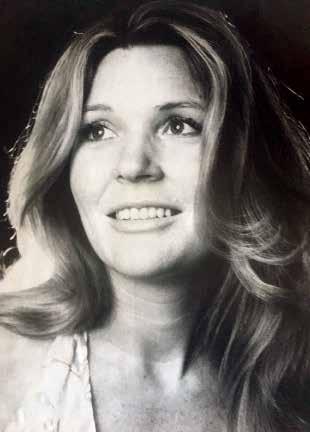
In 1964 she took over Brushfire, the campus literary magazine, which under her editorship became known for running edgy, racy poems, some written by Dain herself. This touched off a high-profile controversy that was avidly covered by the two Reno newspapers, as conservative campus bluenoses sought to rein in Brushfire and get rid of Garwood.
“I have a very bad name on campus,” she told the State Journal. “I am unloved ... But I doubt that I could edit a magazine that would not be controversial. There just aren’t all that many things that are written about tulips and butterflies.”
In the end she was neither censored nor fired, and her Brushfire experience might have propelled her toward a literary career — except that she also was doing very well as a Reno Little Theater star. Acting seemed like the better bet.
“My acting teachers were more encouraging than my English teachers,” she says. As a poet, “I didn’t color within the lines, shall we say.”
Betty Friedan’s book “The Feminine Mystique” was a bestseller at the time, and Dain was greatly influenced by Second Wave Feminism. When it came to dealing with male chauvinists, her College Bowl experience was par for the course, but she did not back down. These were volatile times on American campuses — in Berkeley, the free-speech movement was in full swing — and Dain did her bit to drag the University of Nevada into the national zeitgeist.
In the summer of 1965, she won the Little Theater’s “best actress of the year” award, and promptly transferred to UCLA to complete a theater degree, make contacts in the L.A. theater world, and try her luck in Hollywood.
there were chauvinists aplenty awaiting her in L.A. One of them, per Dain, was Charlton Heston, who was among the judges at UCLA’s Hugh O’Brien Acting Awards contest in 1967. Dain was a contestant, playing a fictionalized version of Eva Peron in a scene in which she spouted angry defiance at her lover, a powerful politician. When Dain didn’t win the contest, another judge, the movie star turned film director Ida Lupino, told her that she had been robbed. Dain is sure Heston was responsible.
“Because he didn’t like strong, sexy women,” she says, still indignant at the memory.
At first, Dain had better luck in Hollywood, scoring a movie job right out of UCLA. She played a biker chick in a grindhouse-style exploitation film called “Angels From Hell.” Jack Nicholson and many other future stars got their start in low-budget biker flicks like this one, but that path did not open
ACTRESS HEADSHOT, CIRCA 1970up for Dain. She got plenty of theater jobs over the next few years, but screen roles were few, and it’s hard to make a living as a stage actress in L.A., especially back in the ‘70s.
Drawing on her College Bowl experience, Dain supplemented her income by appearing as a contestant on TV game shows such as “The Joker’s Wild” (where she won $3,500) and “Split Second” ($1,500). The shows were fun, and the money and prizes she won came in handy, but she still was just scaping by financially, working as an office temp between theater jobs. Finally, she came to the decision that most would-be actors eventually arrive at: It was time to find a serious day job.
Dain’s choice was perhaps atypical: She acquired the necessary accreditation and in 1973 was hired as a financial advisor in a Dean Witter office in Glendale.
“I became a stockbroker because I wasn’t making a living in movies,” she says.
But that still left television. Dain soon parlayed her newly acquired Wall Street expertise into an on-air job as a news anchor on KWHY, an independent station in Los Angeles which had pioneered the concept of providing business and financial news all day long while the markets are open.
“I saw it as a way to make a living and still be on television,” she says.
She thrived at KWHY-TV for five years, until 1980, when she decided it was time to move on. She was now pushing 40, and she knew that female TV journalists tended to be shunted aside as they grew older. There were certain high-profile exceptions, but the odds were against her being one of them.
“I wasn’t going to be Barbara Walters,” she says.
But what to do next? A lightbulb went on one day while she was conducting a KWHY interview with a business professor from the University of Southern California.
“And I thought, that’s what I’m going to do, I’m going to be a business professor!”
She quit KWHY and went off to USC to pursue a Ph.D. in business. One of her professors told her that she was a natural writer, so she started helping him write his academic articles. Next thing you know she had been named managing editor of the business school’s magazine, New Management. She found that she enjoyed editing the magazine much more than taking
classes, so eventually she abandoned the Ph.D. pursuit and settled for a master’s degree in business administration (MBA).
Meanwhile, she had become romantically involved with another one of her professors and started helping him with his writing projects. Their collaboration didn’t end well.
“I ghostwrote his best-selling book. He didn’t give me the credit that I should have had.”
They had what she describes as an “explosive” breakup, which left Dain at loose ends. She had left the magazine and was no longer a USC student. It occurred to her that if she could ghostwrite one bestseller, she could write another one under her own name.
“I was sitting home and saying, ‘Well, what am I going to do?’ And I decided I’d write a novel.”
Not just any sort of novel, but a mystery novel. This was a literary genre she had enjoyed since childhood, when “Nancy Drew” was a favorite. As an adult, her favorites included the “Lord Peter Wimsy” novels of Dorothy L. Sayers. And she remembered the time her father took her to an entertaining talk given by Erle Stanley Gardner, the “Perry Mason” author, “who made writing mysteries sound like a lot of fun,” she recalls.
There was another reason she decided to write a crime novel: to exact revenge on her ex by making him a character in the book and killing him off in the first chapter.
“The reason that I wrote a mystery was that I wanted to murder him,” she says with a smile. “I don’t remember anything about that book except how much fun it was to kill him.”
This novel was never published, but she made a point of sharing the manuscript with her ex.
“He said, ‘What a fascinating character. What a shame we had to lose him so early.’”
Like would-be actors, would-be novelists need day jobs to pay the bills. By 1990, Dain had found one as a business professor at Cal State Los Angeles, a parttime gig that left her time to write. (She also continued to appear occasionally on game shows, including “Jeopardy.”)
Her second manuscript, “Make Friends With Murder,” featured a female freelance writer who stumbles across a murder in California’s wine country. Published in January 1992, it was praised by Publisher’s Weekly as “an atmospheric, well-written mystery
debut ... Garwood has created an interesting character trying to make her way on her own terms.”
Garwood? Yes. Judith Garwood (Judy, to her friends) had been her name for 50 years; the name that had graced many theater marquees; the name on the silver screen when the credits rolled at the end of “Angels From Hell;” the name by which her KWHY viewers had known her; the name on her UCLA and USC sheepskins. But there was a problem: When her friends tried to find her new novel in stores, they kept being directed to books by Julie Garwood, a popular writer of historical romances.
“It was my agent who said, ‘You’ve got to change your name.”
And so her next novel was published under a nom de plume: Catherine Dain. (Dain was her sister’s married name; Catherine had been the first name of one of her great-great-grandmothers.)
That next novel, published later in 1992, featured a new heroine, Freddie O’Neal, a private investigator based in Reno. Dain says she was inspired by Joseph Campbell’s classic study “The Hero With a Thousand Faces,” which asserted that America’s arch-typical heroes were either cowboys or private eyes.
“Freddie was a combination of both, but she was a woman,” Dain says.
Freddie was a success from the get-go. The first book in the series, “Lay It On the Line,” was nominated for a Shamus Award, as was the fourth one, “Lament For a Dead Cowboy.” And they sold well enough that her publisher kept putting them out. (There were seven in all.) But they weren’t making Dain rich, and by 1997 she was the opposite of rich: She was bankrupt.
Freddie’s fault. Around the time that Dain started writing novels, she had moved to Chatsworth, in the far northwestern corner of Los Angeles. She had set her heart on building her dream house on a rocky promontory in the beautiful wilds of nearby Box Canyon. But it was an expensive project, and she didn’t have the funds to pull it off.
Then, in January 1990, she won $100,000 on “Wheel of Fortune.” Suddenly she could afford to buy the property on which her projected dream house was to rise. Unfortunately, the project turned out to be a far more expensive undertaking than she had anticipated, and many things went wrong, and the upshot was

DAIN’S FIRST FREDDIE O’NEAL MYSTERY
she ended up declaring bankruptcy in 1997. Three things resulted: She retired Freddie in favor of Mariana Morgan and Faith Cassidy; she moved from Chatsworth to Ventura, where the cost of living was lower; and she legally changed her name to Catherine Dain, because Judith Garwood was the name on her bankruptcy papers, and she wanted a fresh start in life.
Which brings us back to December 1998, when Dain was awaiting the upcoming publication of the first Mariana novel. The first Faith was to follow a year later.
All three Dain heroines have things in common with their creator. Freddie, like Dain, grew up in Reno; went to the same schools there that Dain did; has mother issues; and shares Dain’s fascination with the Old West. Mariana, like Dain, is a New Age enthusiast. Faith, like Dain, is a formerly aspiring actress who fell short of her goals and needs a new professional passion. As private eyes, all three women are able to have thrilling adventures that Dain herself never had.
“They were all pieces of me,” she says. “Writing the books was sort of like living out fantasies.”
She had a lot riding on Mariana’s and Faith’s success. Her previous publisher “had dumped me,” she says, when she declined to keep writing Freddie books. She had found a new publisher to launch the Mariana and Faith series, but the books still had to sell.
Meanwhile, it was the end-of-the-year holiday season, which Dain had never much enjoyed. She had never married or had children, and her two nephews lived far away, so it was a lonely time of the year for her. Trying out for a play in Ojai would be a welcome distraction.
The “Marvin’s Room” director, Tom Eubanks, was very impressed
by her acting chops.
“You’re the best actress who auditioned,” he told her. “But I can’t cast you as the lead because you’re too old.”
But he did cast her in a smaller role, and in January 1999 she made her Ojai Art Center Theater debut.
The play’s male lead, a Ventura teenager named Zachary Pugh, made such a splash in it that he was “discovered” and went on to bigger things on television and on Broadway, after changing his name to Zachary Levi. As for Dain, she was thrilled just to be back on stage again after so many years. She kept trying out and eventually was cast again, in “Equus.” Meanwhile, her mystery-writer career was going nowhere, as neither Mariana Morgan nor Faith Cassidy had broken through to the bestseller lists.
“I was feeling written out,” she says. “I was so much in love with acting again that I just couldn’t think about sitting alone in my room writing books.”
In a way, acting in Art Center plays was akin to writing her mystery novels: Through the characters she played on stage, she could experience adventures she never had in real life, except that these adventures were crafted by Chekhov or Shakespeare rather than by Dain herself, and murder was rarely involved.
In 2002 she gave up on novel writing, moved to Ojai and joined the Art Center Theater Branch board. She loved the artsy little town, she loved its beautiful setting, and she loved being part of the welcoming local theater community.
“I thought, this is home.”
a Theater Branch mainstay, serving on its board for many years (and as its president for several years), and producing and directing plays as well as acting in them. She estimates that over the years she appeared on stage in around 16 local productions, including one-acts. They ranged from serious drama (“Equus,” “The Crucible”) to satire (“The Madwoman of Chaillot”) to musicals (“Showboat,” “The Music Man”) to farces (“Noises Off”).
Ojai is not Broadway, of course, but one reward for acting in small-town community-theater productions is that strangers recognize you on the street and gush about your performances.
Dain had enjoyed these interactions as a young actress starring in Reno Little Theater productions, but they had rarely if ever occurred when she acted on L.A. stages in the 1970s. Now, in Ojai, she was once again a public personage.
“It was kind of like coming full circle,” she says. “People would come up to me in the Farmer’s Market and say how much they loved me in such-and-such a production. The sense of being recognized was so exciting.”
Eventually Dain moved back to Ventura to take advantage of an affordable-housing opportunity that was too good to pass up. But for many years after that, she returned to Ojai each Saturday and Sunday to hold down the fort as the Art Center’s weekend docent. She finally retired from that job last year, after turning 81. But she returned to the Art Center once again this past January for a Literary Branch interview that focused on her mystery-writing career.
She has never gone back to novel writing, yet her legacy resides in her 12 novels, which fill a shelf in her apartment (and are available on Amazon.com in several formats). Acting for the stage is an ephemeral art form — a performance that is not filmed is not preserved for posterity. But Catherine Dain lives on in her books, because she put so much of herself into all her private-eye heroines. She still has a few copies of each of her novels, which she keeps around so that the elder of her two nephews can one day pass them on to his granddaughters, who (she hopes) will be inspired by the examples of Freddie O’Neal, Mariana Morgan and Faith Cassidy — strong, fearless women who overcame adversity to forge their own paths in life.
Just like their creator.
 DAIN IN HER MYSTERY WRITER HEYDAY, 1990S
DAIN IN HER MYSTERY WRITER HEYDAY, 1990S
When you add native plants to your garden, you join the movement to build habitat connectivity and increase climate resilience in the Ojai Valley.
HAVE YOUR GARDEN REWILD CERTIFIED. BECOME A HABITAT HERO! GOLD
Be a leader in your community and join the movement. Learn more at rewildojai.org


people talk about Palm Springs as the desert playground of classic Hollywood stars, Frank Sinatra’s name often comes up. In the 1940s the singer built a modern house here, with a swimming pool shaped like a piano.
He drank at a place called Melvyn’s. (If you care to emulate him, order Jack Daniels.) He was a regular for dinner at the Lord Fletcher Inn, and one time strolled over to a nearby table as a candle-lit cake was brought out and sang “Happy Birthday” to a flabbergasted stranger. (It’s said that Sinatra was generous to a fault — and that fault was usually his latest girlfriend or his boozing buddies from the Rat Pack.)


But Ol’ Blue Eyes was not the only big name in Palm Springs. In the 1930s Albert Einstein often stayed at a Mediterranean villa set against the mountains at the edge of town. It was the home of his friend Samuel Untermeyer, the first attorney ever to earn a $1 million fee on a single case. His guest, the eminent physicist, liked to sunbathe on a hilltop behind the house … not always with his clothes on.
My wife, Merry, and I got to spend the night in Einstein’s bedroom, in what is today The Willows Historic Palm Springs Inn. My first thought: Holy Theory of Relativity! Einstein slept here! I awoke in the morning with my mind as clear as a bright desert sky. Did being in the same space as this luminous mind make me smarter? A genius, even? I like to think so.
Over the years, the guest list has also included royalty and rock stars, a U.S. president, Nobel and Pulitzer Prize winners, honey -
WILLOWS HISTORIC INN WILLOWS - EINSTEIN AND UNTERMYER


mooners Clark Gable and Carole Lombard, contemporary celebrities ranging from Robert De Niro to REM’s Michael Stipe, and at least a dozen people whose faces have appeared on the cover of Time magazine.
On Merry’s and my arrival in late afternoon, a friendly innkeeper ushered us into the living room and joked about their high-tech check-in system, which consisted of a white card and a pen laid on an antique desk. Wrought-iron chandeliers hung from a beamed ceiling, and a fire was already going in the carved limestone fireplace. Somehow we’d been wafted back to the gracious, glamorous 1920s, the era when people began wintering in Palm Springs and enjoying its sunny, slow way of life.
French doors opened onto a terrace with a view over the city and
the Coachella Valley. But we chose to plop down by the fire to sip wine and enjoy appetizers served on a silver tray: olive tapenade on French bread, dates wrapped in bacon, Brie with apricot preserves. Other guests came in and sat on large velvety chairs, and we chatted as though we were all visiting a friend’s house. Funny stories ensued.
Canadians Colin and JJ Hill, who were celebrating their wedding anniversary, told about the time in Mexico when they were pulled over by police officers “collecting for a school charity.” JJ reached in the glove box and handed them a roll of bills, then whispered to Colin: “Get going! Step on it!” She had given the police a wad of promotional bills from a Canadian tire store.
“At least they had the president’s face on them,” observed Colin. “Yes,” JJ noted, “the president of the tire company!” Such happy encounters don’t happen in a hotel.



Dale Chihuly. We admired canvases by two of our favorites — California plein-air master Edgar Payne and Taos painter Joseph Henry Sharp.
During lunch in the museum café, our waitress suggested we go to the third floor and look for a giant stack of plates. “Walk around them to see something magical.”
In the morning we ate a three-course breakfast, seated in a dining room with an ornate frescoed ceiling and a fireplace clad in 300-year-old Spanish tiles. Outside the floor-to-ceiling windows, a waterfall tumbled fifty feet down a cliff of native rock.
out the inn’s iron gate and around the corner to the Palm Springs Art Museum. In the soaring lobby we looked up at a sculpture fashioned of colorful glass tubes and tendrils by celebrated artist
Artist Robert Therrien had crafted 1950s dinner plates of ludicrously exaggerated size and stacked them, in what looked to be a precarious manner, in a tower eight feet high. Walking in a circle around them created the odd optical illusion that the stacked plates were wobbly and about to fall — a cool Pop Art effect, and a good laugh. I like a museum with surprises.
and other civilized lures — hip hotels, top restaurants, shops along Palm Canyon Drive — I’d nearly forgotten we were in the middle of the Colorado Desert. To acclimate ourselves, Merry and I drove to a 1,200-acre preserve devoted to plants

and animals that somehow manage to thrive in this sun-blasted, sand-dry landscape.
The most remarkable animal we met at the Living Desert, though, was a primate of the species Homo sapiens — our amusing volunteer guide, Bruce Elwood. He had a deep knowledge of desert wonders, both here and around the world, and a

stock of cornpone jokes.
As we strolled through the gardens, Bruce pointed out white scale on a cactus. He used his car key to scrape it off and then crushed it, whereupon it turned scarlet. “It’s cochineal,” he explained, “the stuff that dyed the robes of European kings red. It’s still used today — for instance, to make pink grapefruit juice pink.”
A bit later Bruce introduced us to a thick-billed parrot, an endangered species. “We used to have one in our bird show,” he said. “It spoke several words, including “’Oh-oh.’”
Bruce: “You’re almost extinct.”
Bird: “Oh-oh!”
We also met two bobcats, brothers that had never been separated, and spied a great horned owl perched in a grove of fan palms. We marveled at the fennec fox from Africa, the world’s smallest canid, which can weigh less than three pounds. Its very large ears dissipate the heat of its native Sahara Desert. (“Ear conditioning,” noted Bruce.)
But our favorite animal was a jaguar that padded right up to us and stopped with its huge head only inches away – fortunately behind a pane of thick glass. His visage reminded me of an Inca mask, a jaguar god with emerald eyes.
Toward the end of the day we watched giraffes lope along a ridgetop, their gait slow and dreamlike. Silhouetted against the sunset sky, they painted a classic scene out of Africa, and yet here they were, in the California desert.
dovetails beautifully with the manmade one, particularly in architecture. The city holds a treasure trove of houses designed in the Mid-Century Modern style that exploded after World War II; Palm Springs was ground zero.
Architects such as Albert Frey, John Lautner, and Donald Wexler adapted its clean lines, glass walls, and indoor-outdoor living to the desert’s intense sunshine and expansive mountain views, creating what’s called Desert Modernism.
Today Palm Springs is a pilgrimage spot for architecture devotees. To learn more, we took a tour offered through the museum’s Architecture and Design Center. We met our expert guide,

Michael Stern, and piled into his red Ford Flex to begin our education.
He explained why Palm Springs looks the way it does. Long ago the city imposed a one-story limit on houses so as to prevent them from blocking views of the mountains. Walls and hedges make the open residences “discreet to the street,” while landscaping showcases desert plants such as smoke trees and ocotillos.
We wondered why so many celebrities, from Bob Hope to Elizabeth Taylor, have owned vacation homes here. It turns out that a clause in Hollywood contracts once stipulated that no famous face could be farther than 120 miles away from the studio in case it was needed for filming — so Palm Springs was perfectly located. And secluded in the desert, famous stars could party out of the spotlight or simply relax. (When reclusive film goddess Greta Garbo said “I vant to be alone,” Palm Springs is where she went.)
Our driving tour passed Mid-Century houses that have been home to William Holden, Debbie Reynolds, Kirk Douglas, and Jack Benny. Dinah Shore lived in a six-bedroom showplace designed by Donald Wexler and now owned by Leonardo DiCaprio. (It can be booked for overnight stays.)
But for someone like me who grew up in the 1950s and ‘60s, a major attraction was Elvis Presley’s honeymoon hideaway. Built in 1960 by Palm Springs tract-house developer Robert Alexander, it was showcased in Look magazine under the headline “House of Tomorrow.” Elvis leased it for a year.

Merry and I walked up the same oversized round steps where, in 1967, the King had carried his new bride, Priscilla, to begin their honeymoon. (Lisa Marie Presley was born exactly nine months later.)
As we entered, our guide cautioned, “Try to look past all the Elvis kitsch.” I’m not exactly sure how you’d do that. Rooms were festooned with reproduction gold records and questionable oil portraits of the King. On a kitchen counter lay an Elvis cookbook titled “Are You Hungry Tonight?”
The house itself, though, was an icon of Desert Modernism. It was designed in four perfect circles that cascade down through three levels. A curving rock wall in the living room formed the backdrop for a sweeping built-in sofa. A vast wall of glass looked onto a tropical garden and swimming pool. The house would have made the perfect set for an Elvis movie.
When we resumed our tour, Michael pointed high on a hillside to the late Suzanne Somers’s pink residence (known locally as “The House ThighMaster Built”). We also saw Marilyn Monroe’s former hideaway, shielded behind dense greenery.
Quite a few homes in Palm Springs still glow with the glamorous aura of old-time stars in the Hollywood firmament, from Cary Grant to Lucille Ball. But as Merry and I later roamed around town, we also noticed that young actors, musicians, and designers are again flocking to Palm Springs, renewing its stature as a stylish oasis in the desert.
Once more, Palm Springs is hot — and very cool.

VISITOR INFORMATION: ➞ visitpalmsprings.com
STAY ➞ The Willows Historic Palm Springs Inn: 412 W. Tahquitz Canyon Way, 760/320-0771,
Small luxury inn, each room uniquely decorated in vintage style with all modern conveniences; three-course breakfast, afternoon wine and appetizers, drinks by the pool, concierge service. From $495 per night. thewillowspalmsprings.com.
Dinah Shore-Leonardo DiCaprio Estate: From $3,750 per night. 432hermosa.com.
DO ➞ Palm Springs Art Museum: Collections range from Picasso through Ansel Adams and Warhol. psmuseum.org.
➞ Living Desert: Visits, tours. livingdesert.org
➞ Mid-Century Modern architecture tour: moderntour.com. The Elvis honeymoon house may be included on tours during Modernism Week (modernismweek.com).
➞ Sunnylands: 37-977 Bob Hope Drive, Rancho Mirage; 760/202-2222; Designed by noted modernist architect A. Quincy Jones as a winter home for Ambassador Walter and Leonore Annenberg, this 25,000-square-foot house sits on 200 acres with a golf course and 11 lakes. President Ronald Reagan regularly celebrated New Year’s Eve here with friends. Frank and Barbara Sinatra were married in front of the fireplace. Exhibits, gardens, tours. sunnylands.org.
➞ Vintage cars: 244 N. Indian Canyon Drive) Classic and exotic automobiles are on view at auctions run by McCormick’s and at their showroom. (classic-carauction.com)


“We specialize in biomimetic principles. Biomimetic dentistry is the reconstruction of teeth to emulate their esthetic and natural form and function. It is the most conservative approach to treating fractured and decayed teeth — it keeps them strong and seals them from bacterial invasion. By conserving as much tooth structure as possible, we can eliminate the need for many crowns and root canals.”

JACALYN BOOTH
Certified Colon Hydrotherapist
Ojai Digestive Health
With more than 30 years of experience in healing modalities, Jacalyn brings a deep level of caring to the art of colon hydrotherapy. Professional, nurturing, experienced. OjaiDigestiveHealth.com 805-901-3000


DR. NANCY DOREO
is a naturopathic doctor and chiropractor specializing in Applied Kinesiology. Modalities include: IV therapy, Homeopathy, Flower Essences, CranialFacial Release, Gentle Manipulation, Acupuncture Meridians, Massage Therapy. DrDoreo.com 805-777-7184
AUBRIE WOODS
A graduate of USM's Master’s Program in Spiritual Psychology, a Certified SafeSpace trauma facilitator, and certified Theta Healer. Trained in pre-natal support, transformational parenting, pleasure mastery, relationship and intimacy coaching, chakra clearing, and Inquiry Method.
AubrieWoodsCoaching.com

NUTMEG’S OJAI HOUSE
Functional Art for Heart & Home - American MadeFair Trade - Psychic Tarot and Astrology Readers, Energy and Crystal Healings daily by appt. Walk-ins welcomed: Open daily 11 a.m. to 6 p.m. 304 N. Montgomery Street NutmegsOjaiHouse.com | 805640-1656

LESLIE BOUCHÉ, C.HT.
Cert. Hypnotherapist
Find your calm center. Release negative thinking, emotional reactivity, anxiety, fear and unhelpful behaviors. Improve sleep and comfort. Safe, loving, rapid change. It’s time to feel better! leslie@lesliebouche.com LeslieBouche.com | 805-796-1616



LAURIE EDGCOMB
Lic. Acupuncturist since 1986, voted best in Ojai! Natural medicine including Microcurrent, nutritional and herbal consultation, Facial Rejuvenation. LaurieEdgcomb.com 805-798-4148
DR. JOHN R. GALASKA
Dr. John R. Galaska, PsyD, BCN, Cht, university professor of Psychology, Neurofeedback, biofeedback, hypnosis for past troubling experiences and enhancing subjective life experience. BeCalmOfOjai.com facebook.com/BeCalmofOjai 805-705-5175

MICHELLE BYRNES
Elemental Nutrition
Nutrition & Wellness counseling focused on anti-aging, detoxification, personalized nutrition, & weight loss. For more information, visit elementalnutritioncoach.com 805-218-8550

LAUREL FELICE, LMT
Offers Swedish, deep tissue, reflexology, reiki, cranialsacral and pre and post natal massage with a reverent and joyous balance of hands and heart. laurelfelice54@gmail.com 805-886-3674

SECURE BEGINNINGS
Pre-birth to 3; pre/post-natal wellbeing; infant/toddler development; parent education/support. SecureBeginnings.org info@securebeginnings.org 805-646-7559
We bring a specialized massage that takes a holistic approach to treating stress in the body, all from the comfort of your home or office. With skillful hands & intuitive heart each session will unlock your inner Vibrant Wellness. VibrantWellnessOjai.com 916.204.9691

JULIE TUMAMAITSTENSLIE
Chumash Elder Consultant • Storyteller • Spiritual Advisor • Workshops Weddings & Ceremonies JTumamait@hotmail.com 805-701-6152
TO ADVERTISE HERE: plEASE cAll OR EmAIl BRET BRADIgAn AT editor@ojaiquarterly.com OR 805-798-0177




















five days backpacking and bushwhacking across the Los Padres National Forest, the Cuyama Deli was our oasis of sustenance on Highway 166.
We weren’t finished though. There wasn’t a shuttle waiting in New Cuyama to take us back to Santa Barbara. There was still another mountain range to ascend, and another river to cross, but at that point the route was undecided. No one was in a big hurry though during that first week of December 2023. I had five friends with me who work with me lifeguarding on the beach in Carpinteria, and/ or leading kayak trips with me at the Channel Islands National Park. It was late morning when we reached town, and everyone was hangry.
I admired the frothy appetites of young men after backpacking up and over Los Padres icons like Hurricane Deck, the Sisquoc River, and the Salisbury Potrero. Solomon snarfed down a double cheeseburger and fries, followed by a breakfast burrito, in what seemed like a minute. Sean put away half a pizza and a breakfast burrito. Zack and I polished off breakfast burritos and chocolate malts. There was a common theme here. Calories were no match for the chaparral-choked backcountry.
I wasn’t the only one admiring the amount of food being devoured.


As we exited the backcountry and neared Highway 166, we noticed a bedraggled, heavy-set man asleep on the side of the pothole-riddled road in the front seat of a well-traveled pick-up truck. The 70-something-year-old man was snoozing on a huge pile of his belongings. However, once at the Cuyama Deli inhaling piles of food, the same man was sitting in an adjacent booth
listening in on our conversation about where we were going to find a way up and over the Caliente Mountains. Much of our conversation had to do with accessing private property. The last thing we wanted was an angry rancher or ferocious dogs bearing down on us.
“You might want to ask him across the highway,” said the sleepyeyed gentleman, pointing west toward what appeared to be a beleaguered upholstery shop on the other side of Highway 166. “He’s a good guy.”
I was listening, as the last of the fries, malts, and grilled cheeses vanished. I put my pack back on and left everyone while they continued discussing our options. I walked along Highway 166 and crossed over from the lone gas station in New Cuyama to the garage/upholstery shop. I was focused on the open door of the garage, and momentarily walked past the owner of the shop. He and a friend were sitting in the front seat of a black pickup truck, the doors and hood all open.
“Are you the owner sir,” I asked?
The 70-something-year-old man with bushy salt and pepper hair and beard slowly nodded as he chugged down a Dr. Pepper.
“I’m looking to cross over that mountain range,” I said, pointing toward the northeast and the Caliente Mountains, “but I don’t want to upset anyone walking across their private land.”
I explained to him that we had backpacked from the coast, and in a couple days we would be picked up at the Carrizo Plain National Monument. We just needed to cross the Cuyama Valley, cross the Cuyama River, and traverse the Caliente Mountains, before descending into those sweeping grasslands.
“Can I ask you something,” said the soft-spoken shop owner? “What makes a guy like you tick?”
I wanted to laugh, but I managed to keep a straight face.
“Well, I really can’t say, but I love doing what I’m doing,” I replied.
“Fair enough,” he said. “That’s my property line there.”

He pointed nearby to a locked gate drowning in a lifetime supply of tumbleweeds. Beyond that was agricultural lands before reaching the Cuyama River.
“No one will say anything to you as long as you’re walking across,” he continued. “If you were driving, that would be a different story.”
After thanking him, my five scraggly comrades hoisted their packs over his rusty gate, and a dusty hurdle was cleared.
From New Cuyama, the Cuyama River can’t be seen. It veers away from Highway 166 and winds its way to the base of the Caliente Mountains.
As we approached, the banks of the river dropped vertically 30-to-40-feet to the dry, mud-cracked river bottom. There was plenty of flash-flood evidence left over from Hurricane Hillary,




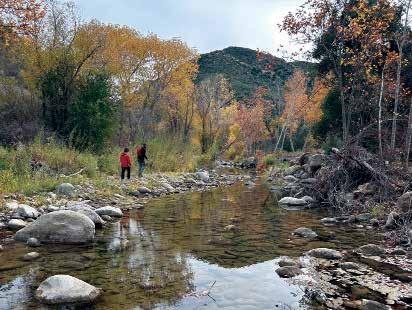


a category 4 storm that wreaked havoc on Central and Southern California’s inland valleys and deserts back in August 2023.
We slid and scrambled down an embankment to the river bottom, weaving between storm debris and more tumbleweeds, while hiking west in the river’s shadows. After several bends in the Cuyama River, we clambered up the opposite riverbank.
Forrest, a kayak guide and beach lifeguard, was stellar with route finding during the entire trip. He led us to an old, overgrown ATV track, where the long trudge up the Caliente Mountains commenced. It was cool and dry as the sun began dropping behind the Sierra Madre Mountains to the southwest, and eastward lay the artful Cuyama Badlands, millennially carved in wind and water.


From atop an advantageous ridgeline, we slung our tents and sleeping bags in the glow of the autumnal equinox. The night before, from the rolling Salisbury Potrero, the Caliente Mountains looked so far away. However, with another 20 miles in our dusty wake, and sunset delivering an eyeshot of the Western Sierra, the Temblor Range, Mount Pinos, and Big Pine Mountain, six salty dogs basked in warm pink and purple hues as coyotes yelped from the depths of the Cuyama River bottom.
Zack and Sean slept out in the open each night. They do the same while guiding kayak trips out on Santa Cruz Island. They were up early the next morning. The sunrise was exceptional, and


the sun commanded our attention because it rose just behind Mount Pinos, the tallest summit in the Los Padres National Forest at 8,847 feet. Although it was even more dramatic due to Zack’s and Sean’s song choice.
As I rolled out of my tent, and sunrise flared across the varied topography, “Riders of Rohan” from the epically cinematic “Lord of the Rings,” blared over the arid ridgetop. Admittedly, I looked over my shoulder hoping to see Gandolf, Legolas and Aragorn rambling toward us from the Cuyama Valley, but to no avail. Still, we felt like lords of the grasslands, as long shadows retreated across the Carrizo Plain National Monument, our last destination.

From the ridgetop, we quickly descended the Calientes, as we followed the rolling, serpentine-like escarpment to the KCL Campground. The Carrizo Plain never wavers with its stunning landscapes, as Soda Lake, the Panorama Hills, and the Temblor Range dominated the boundless veld.
After 70 hard miles over three mountain ranges and across two rivers, the natural wonders of the Carrizo Plain unfolded before us. Six thirsty, hungry, filthy backpackers wandered into the KCL Campground, the journey from the coast range to the grasslands complete.



OPENS MARCH 28
“Tomatomania!”
Time: 9 a.m. to 5 p.m.
Dates: Monday through Saturday
Location: Wachter’s Hay & Grain, 114 South Montgomery Street
Contact: tomatomania.com
Get expert advice, find rare heirlooms, classic hybrids and all you need for a successful season. Find more than 100 varieties. Tomato restock will happen in May.
Locations: Restaurants and shops around town.
Contact: Ojai Chamber of Commerce
805-646-8126
OjaiChamber.org
Looks for the pixie stickers on windows of restaurants and shops around town for a selection of Ojai’s very delicious and versatile tangerine. From food to beverages to products, the town celebrates its homegrown fruit.
APRIL 24-28 2024
The 121st “The Ojai”
Ojai Valley Tennis Tournament
Times: Varied
Location: Libbey Park & Elsewhere
Contact: 805-646-7421
theojai.net
The country’s oldest amateur tournament, going back to 1896, returns with the PAC-12 championships and many other top matchups. This year The Ojai will honor Mike and Bob Bryan,

PIXIE
the most successful doubles players of all time, winner of multiple Olympic gold medals and multiple Ojai championships.
MAY 18-19
Ojai Community Chorus
Time: 7 p.m. Saturday, 3 p.m. Sunday
Location: Ojai Methodist Church
120 Church Road
Contact: 805-640-0468
The Ojai Community Chorus, directed by Connie Woodson, presents its spring concert on Saturday, May 18 at 7 p.m. and Sunday, May 19 at 3 p.m. at the Ojai United Methodist Church, 120 Church Road. The program, “Fun Under The Big Top!,” features songs from musical theater and movies as well as pop that celebrate circus life, show business and make ‘em laugh entertainment.
MAY 28-29
Ojai Art Center’s 46th Annual “Art in the Park”
Times: 10 a.m. to 5 p.m.
Location: Libbey Park
Contact: OjaiArtCenter.org
805-646-0117
Founded in 1977 to give artists a place to sell their work during Memorial Day Weekend.
MARCH-APRIL-MAY
Historical Walking Tours of Ojai
Date: Every Saturday

Time: 10:30 a.m. to 11:30 a.m.
Location: Ojai Valley Museum
130 West Ojai Avenue.
Contact: 640-1390
Come see why there’s so much historical hullabaloo about the “smiling vale.”
MARCH 11, APRIL 14 & MAY 12
Coffee & Cars
Dates: Second Sundays of the month
Times: 8 to 10 a.m.
Location: Westridge Market parking lot
Come check out classic and luxury cars from the area’s proudest collectors. You’ll have a chance to learn from the owners about the history and importance of some of the world’s most incredible automobiles.
THURSDAYS
Ojai: Talk of the Town Podcast
New episodes come out Thursday evenings through the OjaiHub.com newsletter. Guests have included Malcolm McDowell on the 50th anniversary of “A Clockwork Orange,” and Sergio Aragonés on his 60 years as a cartoonist at Mad Magazine.
With more than 170 episodes, the Ojai podcast has become an important part of the local conversation. Sign up at OjaiHub. com for a free newsletter of Ojai events, news, arts, entertainment, history and culture. And podcasts.
 BY SAMI ZAHRINGER
BY SAMI ZAHRINGER




Pi wasn’t sure if the edibles had kicked in yet. Then, like a deflated sex doll, he slithered backwards out of the tumble-dryer, plopped onto the floor and found himself staring right up into the ruddy face of Sergeant Cuddles. It was always this way coming back through a portal; confusion, a crashing headache, and a sensation of somebody slowly spooning out his brains. Gradually, he realized he was in the laundromat behind Seafresh with the sergeant and half a dozen nosy locals peering down at him.
Many times Raymond had noticed that, to the right of Sergeant Cuddle’s nose, amidst a complex system of broken veins, was an almost exact facsimile of the Nile Delta. Now however, he noticed, perhaps due to climate change or late night whisky, the delta was growing new branches and threatening to engulf the sergeant’s entire nostril. Raymond knew this because he had studied the great river systems of the world during his last incarceration. He shook his head and tried to get back to reality.
Raymond Pi had had many incarcerations but he wasn’t a black-hearted criminal by any means. He was just an exhausting one. The DA sometimes struggled to find exactly which laws he’d broken but, there was no doubt about it, the man was a public nuisance. Physically he looked a bit like Pee Wee Herman reflected in the back of a spoon and, despite everybody actually being quite fond of him, after 39 calls to various scenes of mayhem he had caused, everyone agreed he needed to be separated from the public whenever an excuse arose. While a gentle, observant soul — the type of young man to try to dry off wet shower spiders in the microwave with a heart full of nothing but tender


good will — he marched to the beat of his own drum. Trouble was that beat was a complicated sort of polyrhythmic soup as played by a melodramatic wallaby. He wasn’t crazy in a way that anybody could diagnose, he was just different, otherworldly, and he made outrageous claims about some sort of parallel world existing right alongside them from which they could learn the magic and laws of the universe. Ridiculed, scorned, arrested, there was no place for Raymond in this world. Perhaps that’s why he sought out the ancient rhythms of the hidden world.


The veil is thin in Ojai and, for those in the know, porous. There is a portal, ever-moving, between Ojai and Elphyme, land of the supernatural; country out of sight. At certain times of the year the portals yawn between this world and the hidden world, if only you could find them. Times like now — times like the Whickens, when the world begins to awaken from the death of winter. Nobody mocked or tried to arrest Raymond in Elphyme. In between bouts of theoretical plumbing, he spent most of his time trying to get back there, to learn, and see his friends, and bring back to any Ojaian who would listen such knowledge of








the universe’s workings as would make Neil deGrasse Tyson’s fulsome mustache fly right off his clever face.



Raymond knew how to find the portals. He found them with a special compass, carved from jasper and set with a needle made of a single witch’s wart hair so sensitive it quivered and vibrated constantly in his pocket. He had come by the compass the first time he fell through a portal as a boy. He had been climbing the post office tower, somehow managed to kick 4 seemingly insignificant bricks in a certain order while sucking on a licorice toffee, and tumbled through the portal, landing…exactly where he was — at the bottom of the post office tower, only now the tower was an ancient tree. If he squinted really hard he could still see the tower, and the arcade and modern people walking about. But only very faintly, as if superimposed onto this new, older world that he would soon learn was called Elphyme. There, at the bottom of the tree, he found the compass. Just lying there, waiting to be found. Raymond would be allowed only 7 hours at a time in Elphyme before the portal sucked him unceremoniously, wherever he was in the land, back through to Ojai.



ƒ{(the sky gifting him the cloud-telling of nephomancy etc.) + (the fields bestowing on him the dread conversation of ghostsoil-spirits yada-yada) x π + 4 Sespe Creek Indica gummies.}
Actually, he should have divided by π and had a banana but as ever he was too impatient to check his working


Raymond longed to get back there but, in truth there were only 6 or 7 opportunities a year and sometimes he got the logarithm wrong. One time he had driven his electric bike through the car wash singing “Staying Alive” and smoking sativa and had ended up in the middle of a yahtzee tournament at a halfway house for agoraphobic calico kittens, somewhere in feudal Japan.
“Hello Raymond,” said Sergeant Cuddles wearily. “Much as I would prefer never to have to take you in again, it turns out that willful and wanton trespassing in a commercial clothes dryer is technically a misdemeanor under section V of the (he checked his notebook) “the Underwear Privacy Act, 1974. Were you by any chance searching for one of your portals? Anyway, I’m going to have to call your mom again. This time the judge might confiscate your compass.”

When the compass sensed a portal, it would moan a little and the wart hair would curl itself into a spring and boing back to rod-straight again, over and over. This time he had located the portal in the third dryer from the left in the laundromat behind Seafresh. Finding a portal was one thing though; opening it, another. This he did with mystical calculations, different every time. They are too complicated to relate here but, to give you the picture, this time it was basically

Raymond paled and clutched his pocket protectively.
piped up the laundromat owner, Mavis, a woman with the face like three miles of bad road and the IQ of a Thompson’s seedless grape (she reads articles with titles like “Is Oregon A Taurus?”;



for the Illuminati. Moreover, if you go into the Dunkin’ Donuts there, you can gain entry to its series of underground tunnels by whispering “Beyonce” at the barista while winking thrice with one’s left eye.) Wheezing like a dentist’s spit-sucker through teeth like a series of aging cauliflower florettes, she hobbled towards them at a speed she was clearly not used to, a dryer sheet stuck to her leg and a complicated mix of rage and love in her heart.

“I have video evidence of him brandishing a Double D-cup bra at me through the dryer window before he fell asleep,” she yawped. “Prior to that,” she read from her carefully observed notes, “Raymond approached the building from a North-Westerly direction and proceeded to,
enter Mrs. O’Henry’s washing!” She tossed her head triumphantly, like a seagull catching a chip, as she delivered her damning evidence.

In truth, Raymond had brandished no such Double D-cup but Mavis bore a grudge against him from when he thought there was a portal in her chicken coop and frightened her hens so much the shape of their eggs became elongated for a week. One night, he lost his compass in her neighbor, Annabel’s, yard and in trying to find it had accidentally trampled a crop circle in the lawn. By morning it had attracted hundreds of Ojai’s UFO-enthusiasts and Annabel got on the news. Mavis’s parsley patch was trodden to a green mire. You are beginning to get the picture about Raymond.



had rheumatically leapt at the twin opportunities to get Raymond into trouble and see the Sgt. again. 15 minutes frenzied troweling with spackle had brought three miles of bad road down to just the two. Wearing “Bite Me” shade lipstick for the mature woman and, with bosoms rising and falling like two bald men wrestling in her blouse, she sashayed so close to Sgt Cuddles that he could see the crumbs of her morning egg in her cleavage.



While Mavis was certainly two styrofoam cups short of a landfill she was also a red-blooded woman with feelings and needs and had once been quite a beauty before fast-living, a 40-a-day Pall Mall habit, a valley-wide streak of mean, and a gaping void inside her filled only with can after can of Mary Kitchen’s Corned Beef Hash had all taken their toll.


“I was a model, you know. Yes, catalogues, glamour, promos, I did it all,” she would brightly tell her trapped, hapless customers. On the wall of the laundromat was a car-parts calendar she had appeared in in 1974. “I was August,” she would tell people. “Look, I’m pointing at a fan belt.”



Furthermore, she had long harbored a crush on Sgt. Cuddles and
“I’m a woman here all alone, vulnerable and scared! Anybody could come in and ravage me at any instant and with crazy people like Raymond around I need to be able to rely on a strong, forceful man of the law!” she wheedled, coyly fingering the sergeant’s gleaming buttons.


At the thought of Sgt. Cuddles ravaging Mavis, an unwanted image of seniors ravaging a half-price buffet reared up in Raymond’s mind and, with an inward yelp, he mentally scampered off to his happy place: the hidden world. Everybody else could only see the Laundromat at the back of Seafresh, but Raymond knew that at the same time, with differently focused eyes, it was an Elphyme gnome pub called the Elbow and Bush. Let’s recall with him his latest trip via the dryer:



The night was pregnant with possibility as Raymond tumbled through the portal to the damp forest floor, and the moon hung full, like a swollen hormonal pimple, for the year was yet young and in its awkward, spotty stage. Removing a pair of Mrs. O’ Henry’s knickers, statically clinging to his ear, he nodded as he passed Witch Kettle Sam, walking the Holloway to bring gifts to Dame Wintress to usher in the Whickens.




He was on his way to see his pal, Krusele Direspawn. Krusele was a vampire of the less dashing sort. He was the precise physical intersection of an upsetting antique dildo and the concept of gout. (The warlock known as Canny Jim had worked it out mathematically)
Recently, under a full moon, Krusele had bitten a hunter who’d just enjoyed a wild boar supper. Unfortunately, the boar was carrying the notorious blood-borne disease, Brucellosis, and the hunter died in short order. But the trouble with being a vampire is that you’re immortal whether you bloody well like it or not. So now, every 3-5 days and until the end of time Krusele will experience fever and chills, some brief death throes, and can’t be more than 10 ft from a toilet. This was really playing havoc with



his vampire mystique, not to mention his diet. It is hard to creep up on people when your tummy sounds like a sousaphone. And worst of all, his dreams of visiting France were becoming plus sombre. French is Krusele’s weakness, you see. Oh, everybody knows vampires have ludicrous Bavarian accents and capes as black as the abyss. But can’t vampires also dream of striped Breton tops and having a poor work ethic and snails for tea?


Raymond knocked on the door of Krusele’s vault. A sense of fiendish dominion emanated from it, but by now Raymond knew this was just dry ice and and Christian Dior’s “Sauvage.”
crime though, and the case is going through the courts still.
Shortly after that, an outbreak of Dutch Mulberry Bush disease entered Elphryme via an errant nursery rhyme one cold and frosty morning, and devastated the silk-worm industry. By that time it was 100 years later, the prince had woken the princess and everybody could get their spindles back. But Raymond was learning that many fairy tales, although true, had dark back stories: Humpty Dumpy was a tax cheat and Rumplestiltskin was serving 3055 years for exposing himself to an Ugly Sister.

“Entrez-vous!” came the muffled voice from within.


Raymond entered the chilly vault and felt 999 eyes turn to train their beady gaze on him. The eyes were on the faces on 125 spiders perched high up near the ceiling of the vault, some so big they ought to have been paying rent. It should have been 1000 eyes but Winky had had an accident with Krusele’s snail fork.
Krusele was hanging lugubriously from a high rafter. With a leathery swoosh he flew to the floor brushing baguette crumbs from his curled mustaches, and adjusting his beret. He welcomed Raymond warmly, lit some more candles, poured some excellent wine — Français, naturellement — and sat in a bloodred wing-back chair with some onions casually strung across it. Then, into Krusele’s face crept a look of furtive shame, the shifty hangdog look which announces that a vampire is about to speak French. Or as close to French as he could manage.




“Urrrm, yes, no, urrrm, yes” said Sgt. trying to suck his belly button as far away from Mavis’s prying fingers as he could with out actually moving. “Well, we’d better get this guy processed.” In truth he was worried. Mrs O’Henry wore a Double D brassiere? He’d clocked her for an E for sure. A careful man, who kept his Breathe-Rite strip on during sex, the sergeant was disappointed in himself. As a man of the law he prided himself on his observational skills. How could he have been a whole cup-size out? Was he getting too old for this game? Losing his touch? He had hoped to have a nice slow gradual decline, like a popular semi-funny tv show about which people wrote articles saying how it was better than ever, right up until the end.

The thought battered around in his head like a sparrow repeatedly trying to fly through a closed window, and with a furrowed brow, as Mavis tottered around him telling him she was available for interrogation, he collared our hapless Raymond and led him off to the station and his weary mom.


From Ojai, Raymond had brought Krusele Immodium and escargot, and in return, a grateful Krusele told him stories in a variety of outrageous French accents. Krusele, with his centuries of knowledge, taught Raymond ideas both old and new, about science and magic and art and politics. This time, for example, Raymond heard the real story behind Sleeping Beauty. When the king banished all the spinning wheels from the country he had crushed the textile industry. Within months the people were crying out for thread. The country had to import millions of silk worms but the silk worms were overworked and objected to the substandard mulberry bushes they were given to live in, so they organized and demanded better conditions than the sweat-shop, thread-end jobs that were driving many of them to drink and drugs. In a famous “sewcial justice” (punned the Daily Tale) victory for the little guy, they got what they wanted and, in the three day drunken party that followed, could scarcely contain themselves, shooting out so much silk that Fairyland was almost cocooned. In the dwindling oxygen levels, several of the seven dwarves succumbed. No one worm could be charged with the
So, Ojai friends, as the temperamental dryer of Time is terminated by the fluff-filled lint-trap of Fate, and the sodden socks of Sorrow are extracted alongside the dripping knickers of Disappointment, our vignette comes to an end.
Goodnight from Sgt. Cuddles, gently snickering in his sleep and having R-rated dreams about Wilma Flintstone as the Nile Delta spreads slowly over his nose. Goodnight from Mavis, our Damsel of Detergent, sleep-walking in her nightie, down an Oak View feeder road to the Sgt’s house on the 33. Goodnight from the Elbow & Bush as the last gnome weaves his unsteady way into the night. Goodnight from Witch Kettle Sam stealing through the dark to salt the fields of her enemies and lay waste to their cattle. Goodnight from Krusele, stuck on his commode wondering “Shouldn’t it have been called “Fewer Misérables?”
Goodnight from Raymond, his half-cooked spiders and his loud dreams of his own funeral, where mourners have placed Double-Stuff Oreo cookies on his dead eyes so hell knows a true warrior is coming. Goodnight from Ojai, Hidden and Unhidden






